Professional Manufacturer Of Hydraulic Metal Cutting Band Saw Machines
Committed to becoming a well-known manufacturer of hydraulic metal cutting band saw machines.
 READ MORE
READ MORE
 READ MORE
READ MORE

Advanced technical strength and effective technical guarantee.

Flexible business philosophy and professional services.

Advanced manufacturing technology, strictly controlled product quality and good reputation.

For any questions and feedback from customers, we will reply patiently and meticulously.
 READ MORE
READ MORE

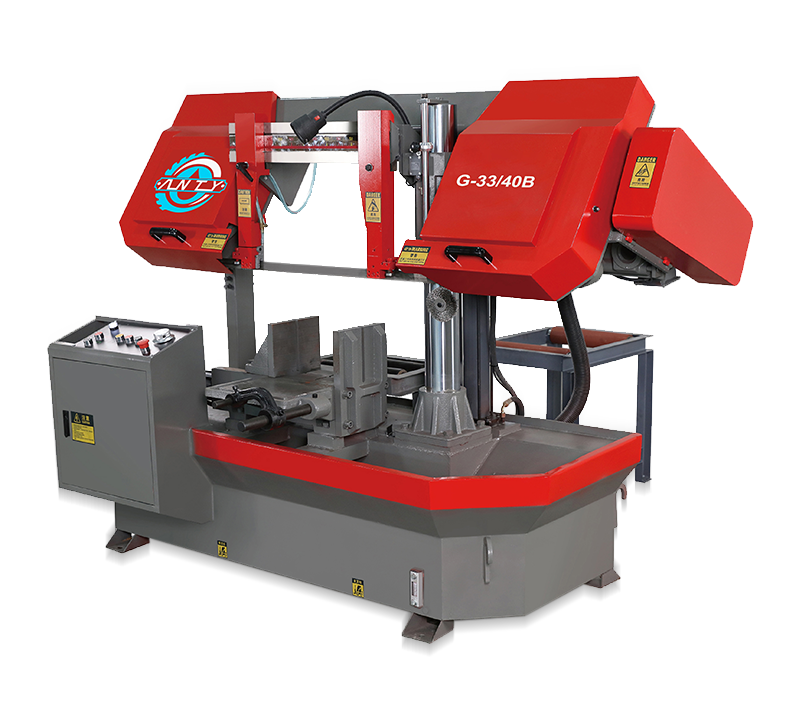
 READ MORE
READ MORE


 READ MORE
READ MORE

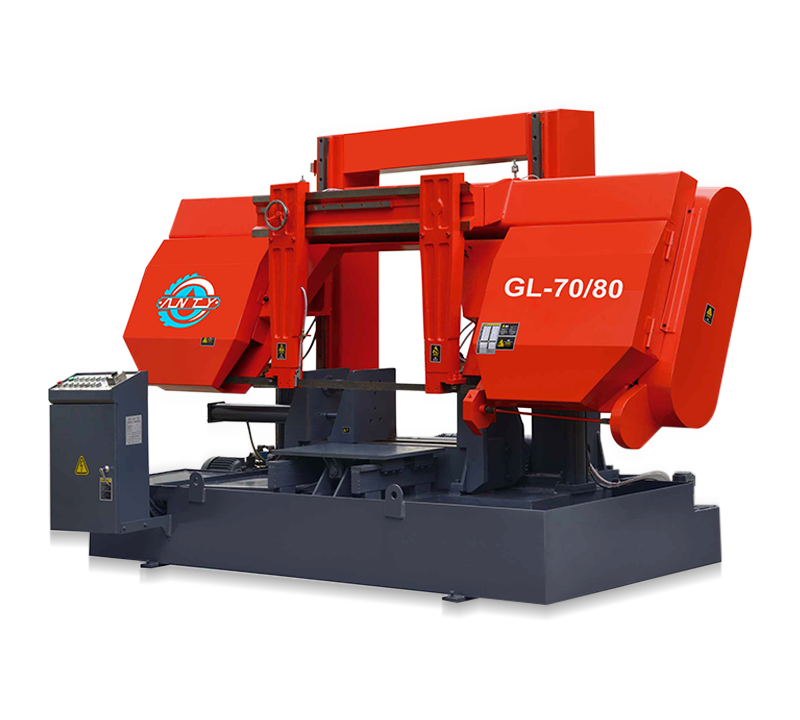
 READ MORE
READ MORE

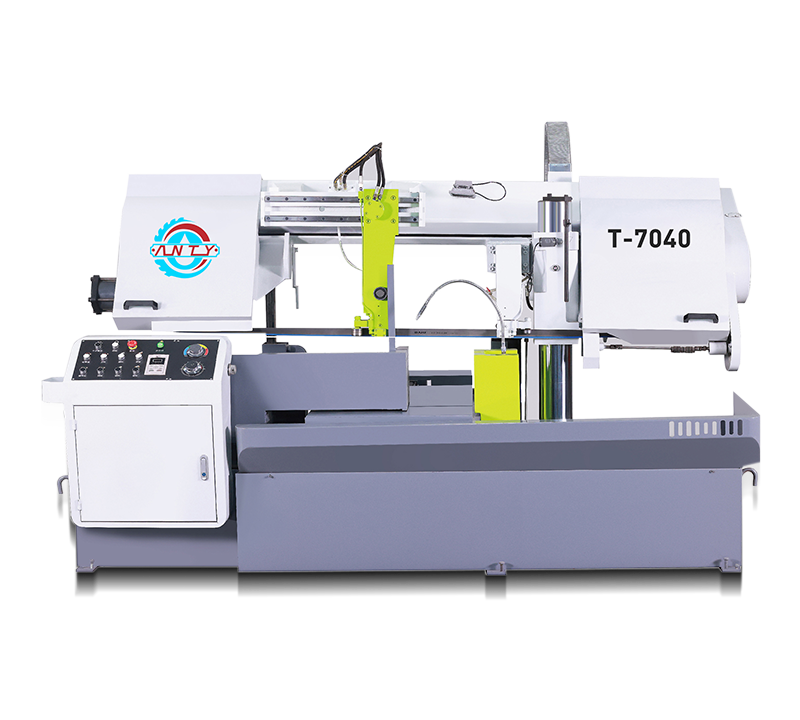
 READ MORE
READ MORE

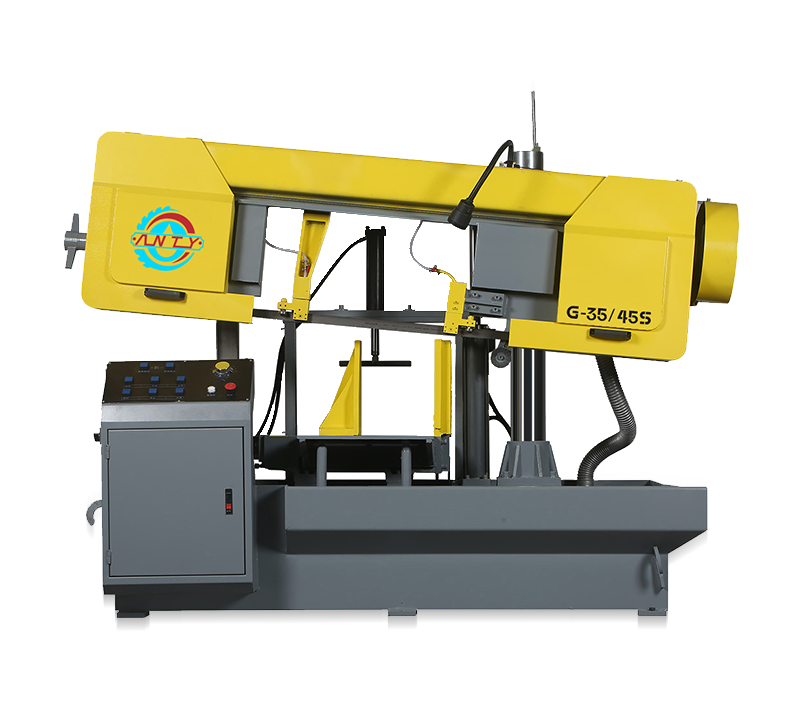
 READ MORE
READ MORE

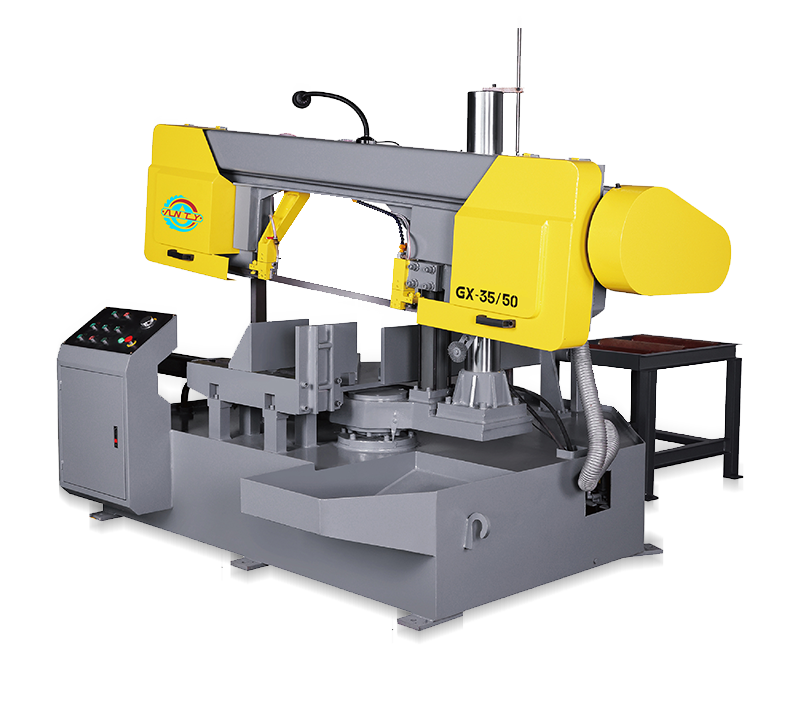
 READ MORE
READ MORE


 READ MORE
READ MORE

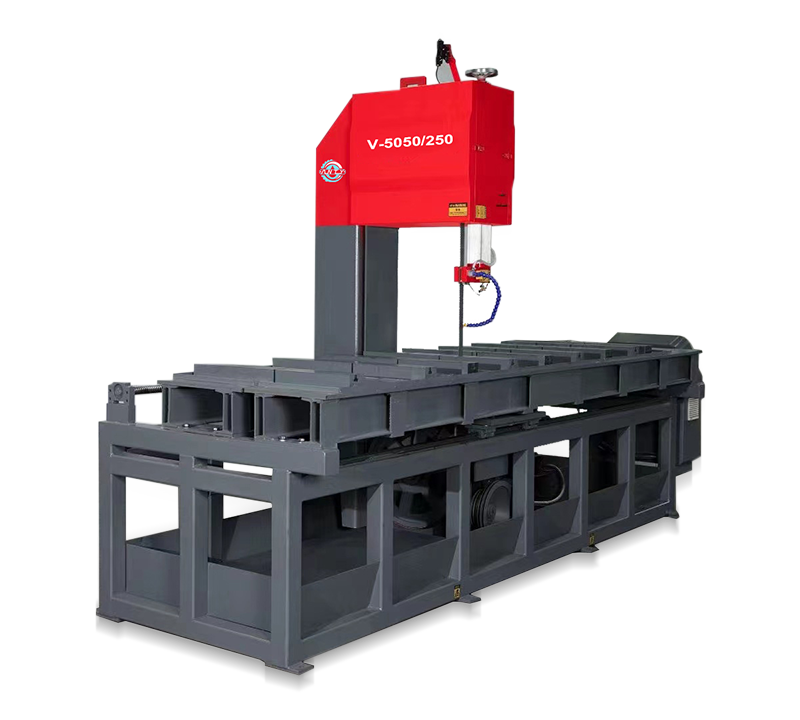
 READ MORE
READ MORE

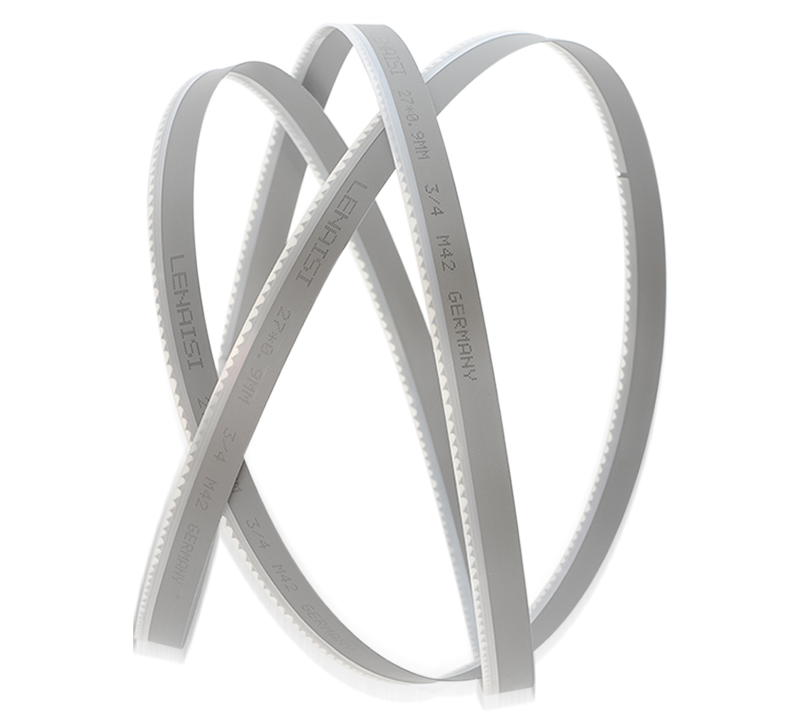
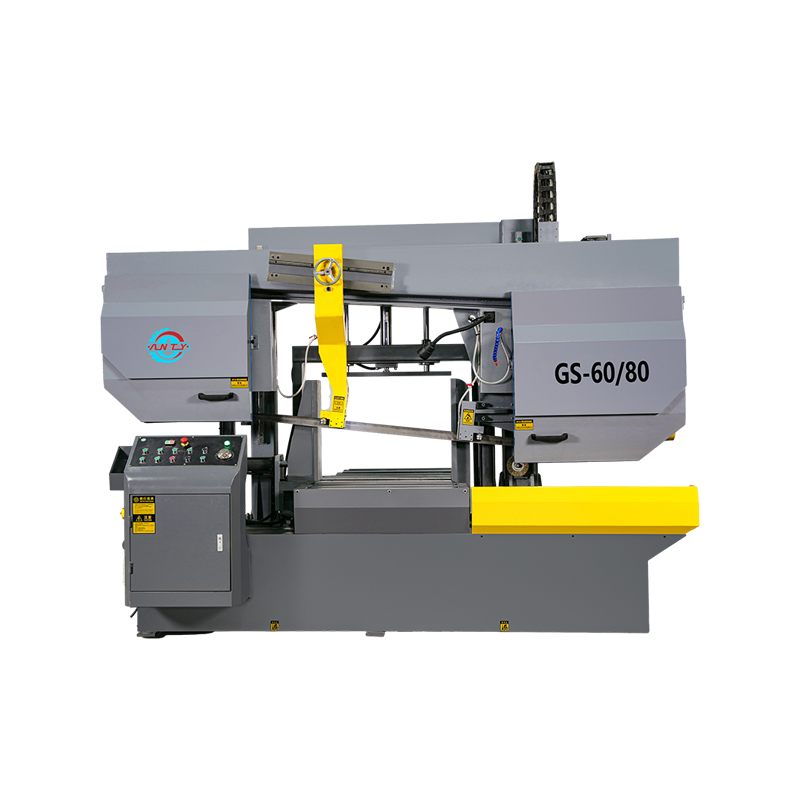
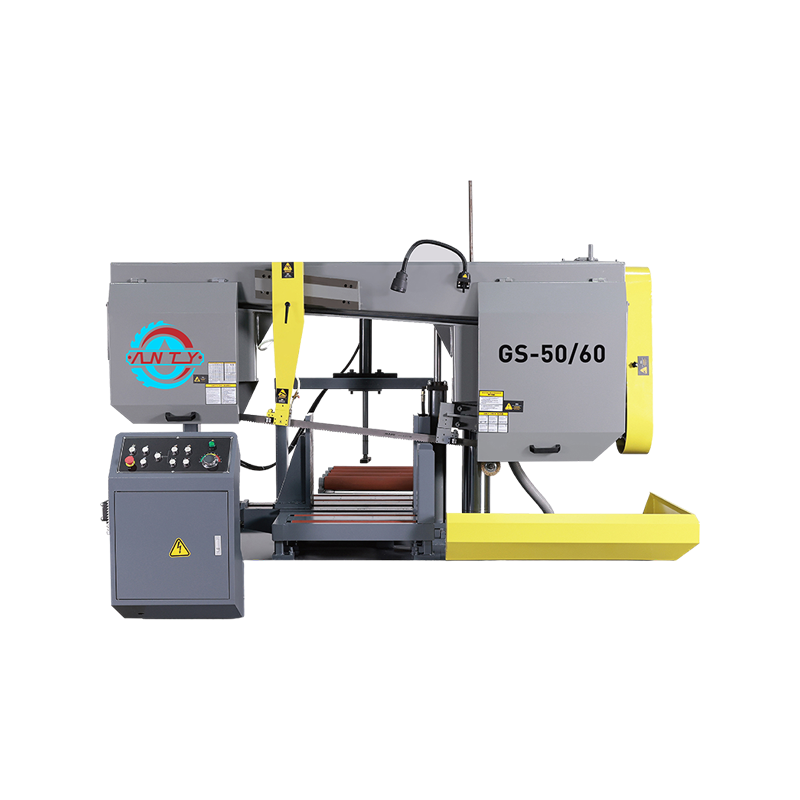
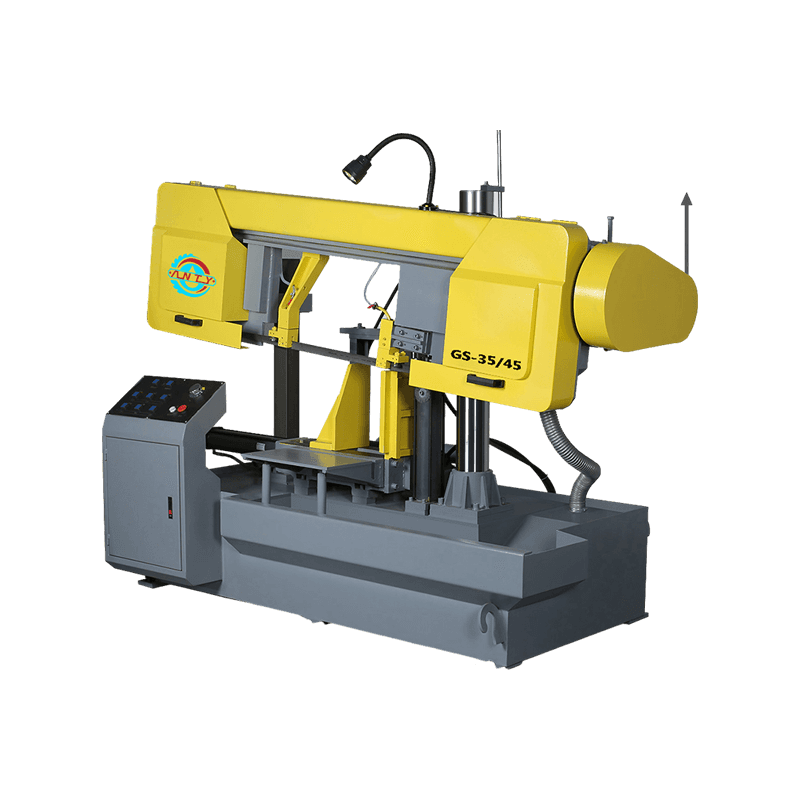
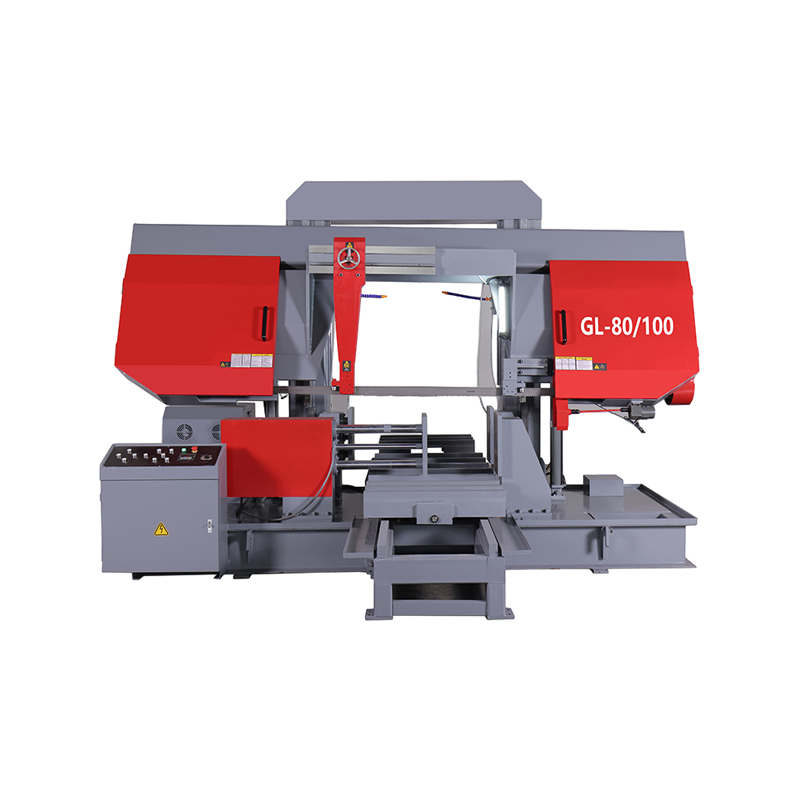
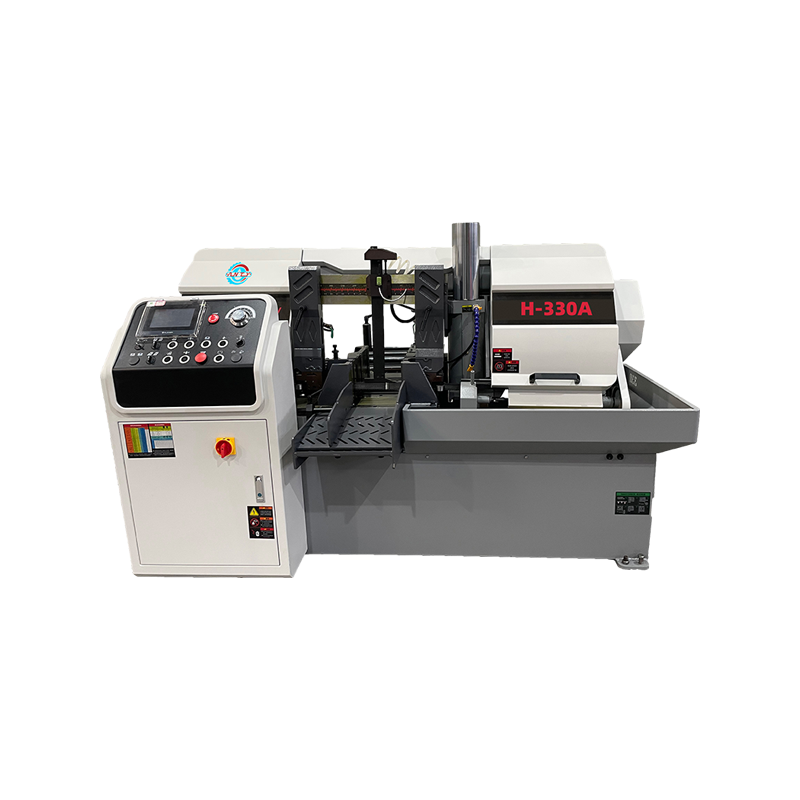
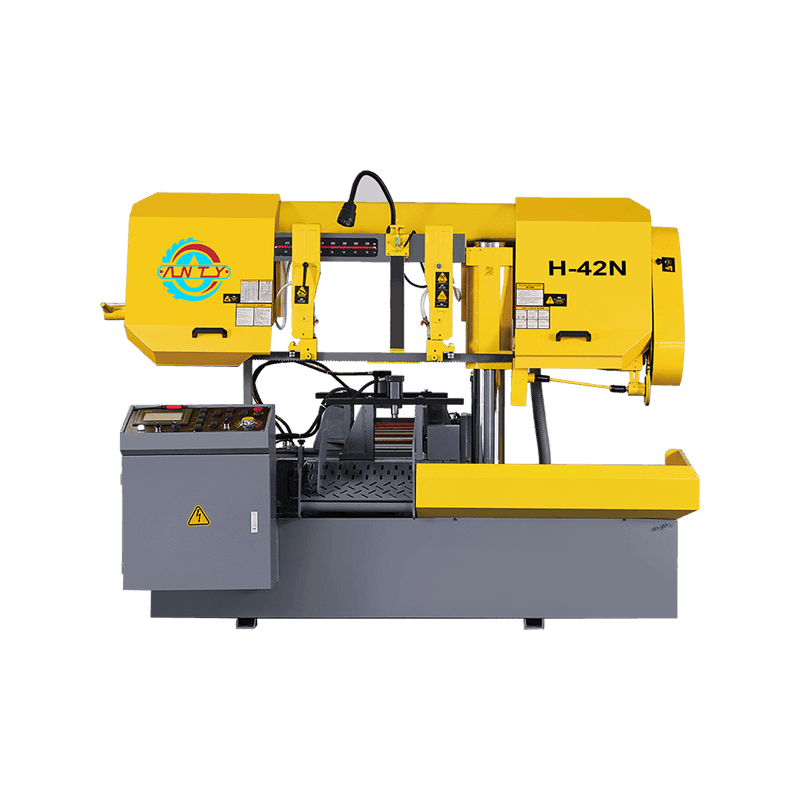
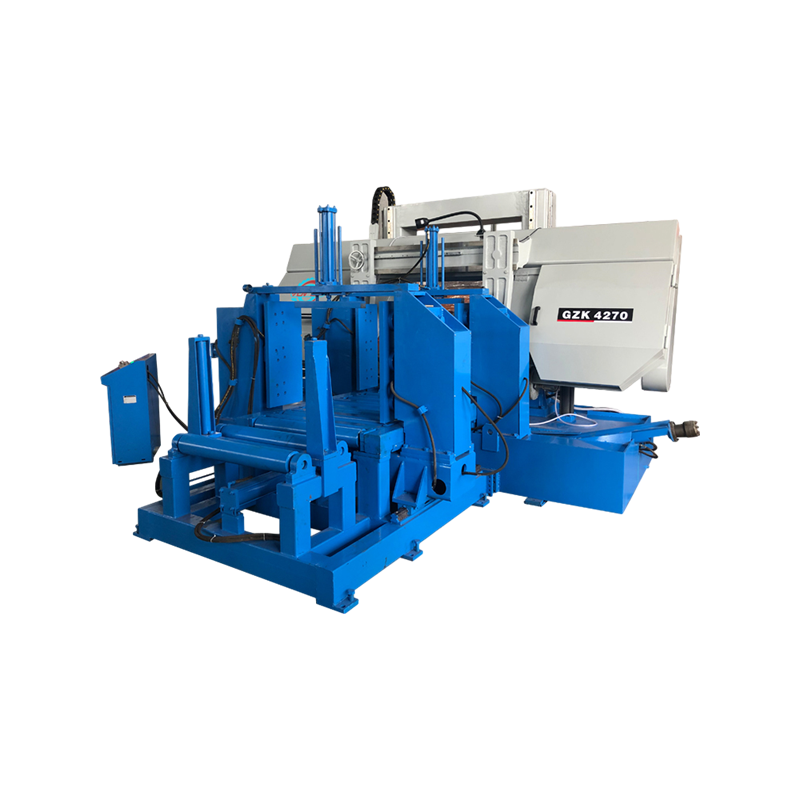
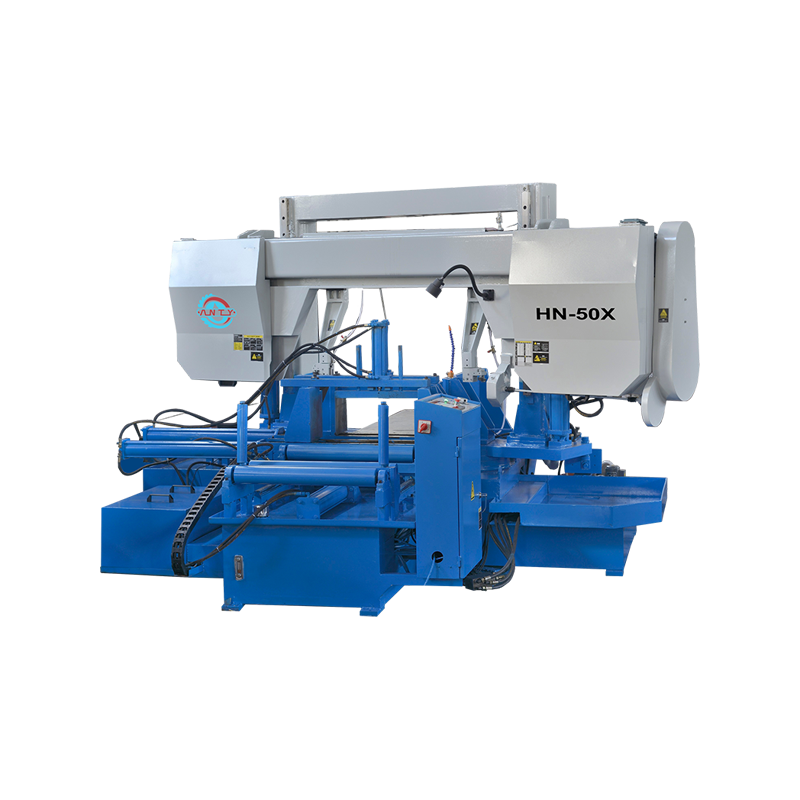
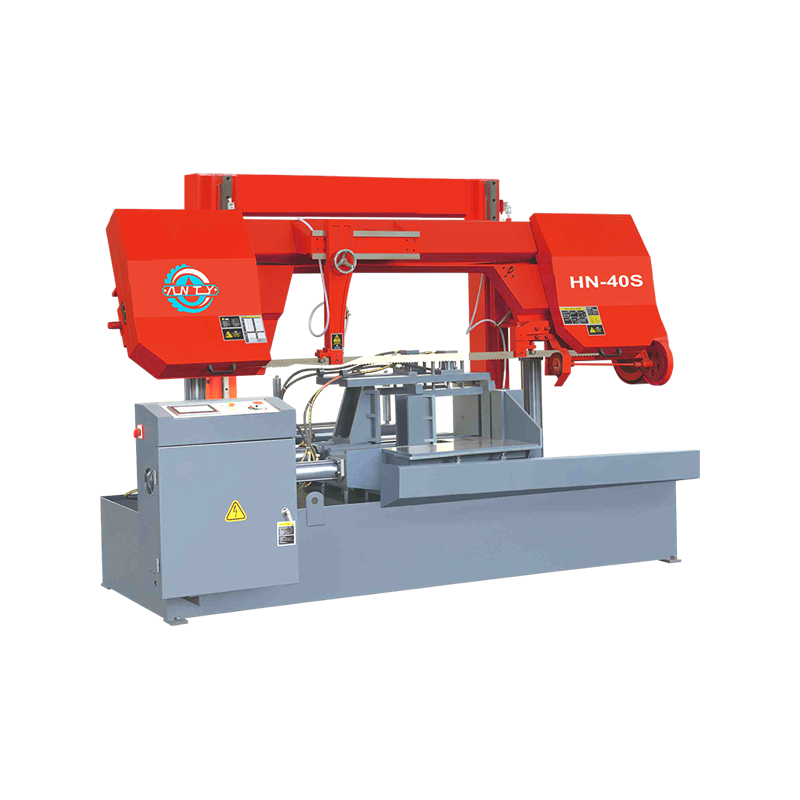
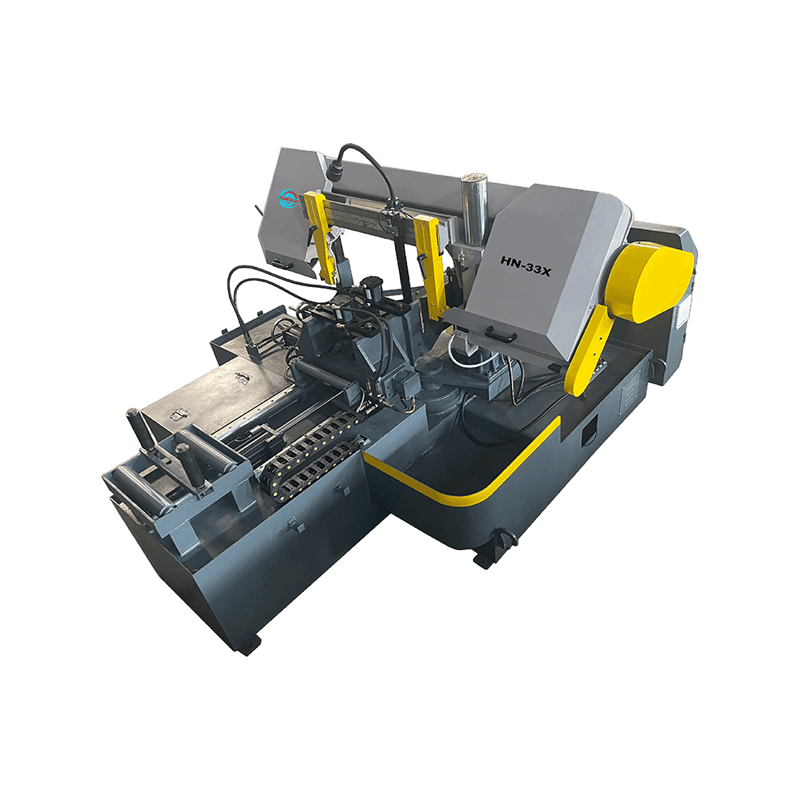
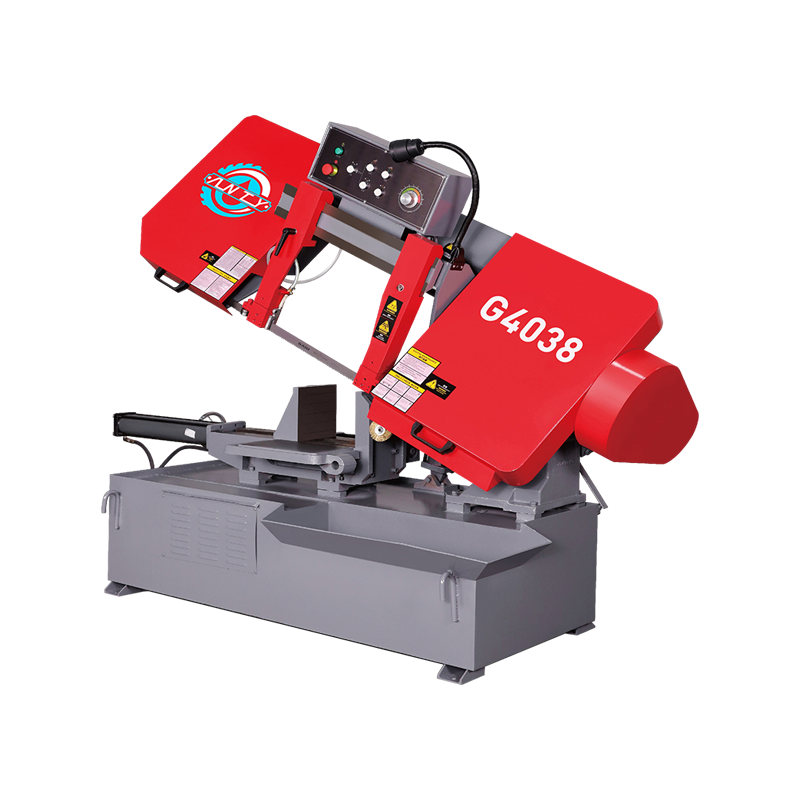

Pay Attention To Our Latest News And Exhibitions.

Questions about material waste often come up when manufacturers evaluate cutting equipment such as a CNC full automatic high speed circular sawing machine and a metal cutting band sawing machine. Production managers and technicians frequently want to know how these machines support stable cutting while also keeping unnecessary material loss under control. Understanding how waste occurs and how equipment design influences it can help users plan more effective processes and choose suitable configurations for their workshops. Cutting Accuracy and Its Influence on Offcuts Material waste in metal processing usually comes from inaccurate cutting lengths, inconsistent kerf width, and secondary trimming. A metal cutting band sawing machine addresses these issues through steady mechanical control and consistent blade motion. Because the cutting stroke remains uniform, the kerf width stays predictable. This condition helps operators arrange cutting layouts with greater confidence and reduces the chance of leaving excessive offcuts at the end of each bar.When paired with a CNC automatic system, a circular sawing machine also contributes to dimensional consistency. Once parameters are entered, the machine follows the same cutting path each time. This reduces length deviations that might otherwise require re-cutting, which is a common source of scrap in manual or semi-manual operations. Stable Operation Helps Avoid Unwanted Vibration Vibration is one of the hidden causes of waste during metal cutting. Unstable movement can make the saw blade wander from the intended line, creating tapered cuts or uneven surfaces. A metal cutting band sawing machine uses a rigid frame structure and a balanced transmission system to keep vibration at a low level during continuous production.For users working with long materials or thick sections, this stable motion is particularly important. Blade drift not only affects accuracy but can also damage the workpiece, forcing operators to trim more material than planned. When the cutting motion stays stable, the usable portion of each workpiece increases. Consistent Feed Rate Supports Material Savings Feed rate plays a major role in how cleanly a cut is formed. Manual feeding or inconsistent hydraulic control may cause sudden speed changes, which often cause burrs, rough edges, or crooked cuts. These imperfections then require extra grinding or trimming.The feed system of both CNC full-automatic machines and metal cutting band saws keeps movement at a controlled pace. A smoother feed line means that fewer corrections are needed after cutting, preserving more of the original material length. Users handling batches of identical parts often notice that consistency in feed rate directly shapes the uniformity of the final pieces. Automatic Operation Helps Reduce Human Error Human error can be one of the biggest contributors to waste, especially when operators need to manually measure and position materials repeatedly. Automatic systems reduce this dependency. Once programs are entered, the machine positions the workpiece and performs the cut without frequent manual adjustments.For fabrication shops processing various materials—such as steel profiles, pipes, and round bars—this automation provides a clear benefit: fewer rejected parts and less leftover material that cannot be reused in later stages. Multiple Cutting Modes for Efficient Layout Planning The presence of multiple cutting modes on a metal cutting band sawing machine helps users plan the suitable cutting sequence for different material shapes. For example, straight cuts may require a different feeding pattern compared with angled or structural cuts.By choosing the appropriate mode, operators can arrange bar stock in a way that uses more of each piece. This practical flexibility is helpful for workshops that process a mix of materials and specifications in one shift. Even small adjustments in cutting mode can influence how much material can be preserved per cycle. Smooth Surface Finish Reduces Secondary Processing When the sawing equipment maintains steady blade tension, smooth motion, and proper cooling, the cut surface tends to be cleaner.Both circular sawing and band sawing machines benefit from these conditions. A cleaner surface is not only easier for downstream processes but also reduces the removal of extra material that occurs during edge correction or deburring. Over long production runs, these small savings accumulate into noticeable waste reduction. Safety and Stability Help Maintain Cutting Quality Safety protection features—such as emergency stop controls, shields, and overload protection—also indirectly influence waste levels. When equipment shuts down promptly during abnormal conditions, it prevents partial cuts or damaged workpieces that might otherwise be scrapped.Overload protection is particularly useful when dealing with dense or large-diameter materials. It prevents the machine from applying excessive force that could deform the piece or damage the blade, both of which can result in wasted material and extra downtime.
Questions about material waste often come up when manufacturers evaluate cutting equipment such as a CNC full automatic high speed circular sawing machine and a metal cutting band sawing machine. Production managers and technicians frequently want to know how these machines support stable cutting while also keeping unnecessary material loss under control. Understanding how waste occurs and how equipment design influences it can help users plan more effective processes and choose suitable configurations for their workshops. Cutting Accuracy and Its Influence on Offcuts Material waste in metal processing usually comes from inaccurate cutting lengths, inconsistent kerf width, and secondary trimming. A metal cutting band sawing machine addresses these issues through steady mechanical control and consistent blade motion. Because the cutting stroke remains uniform, the kerf width stays predictable. This condition helps operators arrange cutting layouts with greater confidence and reduces the chance of leaving excessive offcuts at the end of each bar.When paired with a CNC automatic system, a circular sawing machine also contributes to dimensional consistency. Once parameters are entered, the machine follows the same cutting path each time. This reduces length deviations that might otherwise require re-cutting, which is a common source of scrap in manual or semi-manual operations. Stable Operation Helps Avoid Unwanted Vibration Vibration is one of the hidden causes of waste during metal cutting. Unstable movement can make the saw blade wander from the intended line, creating tapered cuts or uneven surfaces. A metal cutting band sawing machine uses a rigid frame structure and a balanced transmission system to keep vibration at a low level during continuous production.For users working with long materials or thick sections, this stable motion is particularly important. Blade drift not only affects accuracy but can also damage the workpiece, forcing operators to trim more material than planned. When the cutting motion stays stable, the usable portion of each workpiece increases. Consistent Feed Rate Supports Material Savings Feed rate plays a major role in how cleanly a cut is formed. Manual feeding or inconsistent hydraulic control may cause sudden speed changes, which often cause burrs, rough edges, or crooked cuts. These imperfections then require extra grinding or trimming.The feed system of both CNC full-automatic machines and metal cutting band saws keeps movement at a controlled pace. A smoother feed line means that fewer corrections are needed after cutting, preserving more of the original material length. Users handling batches of identical parts often notice that consistency in feed rate directly shapes the uniformity of the final pieces. Automatic Operation Helps Reduce Human Error Human error can be one of the biggest contributors to waste, especially when operators need to manually measure and position materials repeatedly. Automatic systems reduce this dependency. Once programs are entered, the machine positions the workpiece and performs the cut without frequent manual adjustments.For fabrication shops processing various materials—such as steel profiles, pipes, and round bars—this automation provides a clear benefit: fewer rejected parts and less leftover material that cannot be reused in later stages. Multiple Cutting Modes for Efficient Layout Planning The presence of multiple cutting modes on a metal cutting band sawing machine helps users plan the suitable cutting sequence for different material shapes. For example, straight cuts may require a different feeding pattern compared with angled or structural cuts.By choosing the appropriate mode, operators can arrange bar stock in a way that uses more of each piece. This practical flexibility is helpful for workshops that process a mix of materials and specifications in one shift. Even small adjustments in cutting mode can influence how much material can be preserved per cycle. Smooth Surface Finish Reduces Secondary Processing When the sawing equipment maintains steady blade tension, smooth motion, and proper cooling, the cut surface tends to be cleaner.Both circular sawing and band sawing machines benefit from these conditions. A cleaner surface is not only easier for downstream processes but also reduces the removal of extra material that occurs during edge correction or deburring. Over long production runs, these small savings accumulate into noticeable waste reduction. Safety and Stability Help Maintain Cutting Quality Safety protection features—such as emergency stop controls, shields, and overload protection—also indirectly influence waste levels. When equipment shuts down promptly during abnormal conditions, it prevents partial cuts or damaged workpieces that might otherwise be scrapped.Overload protection is particularly useful when dealing with dense or large-diameter materials. It prevents the machine from applying excessive force that could deform the piece or damage the blade, both of which can result in wasted material and extra downtime.
 READ MORE
READ MORE
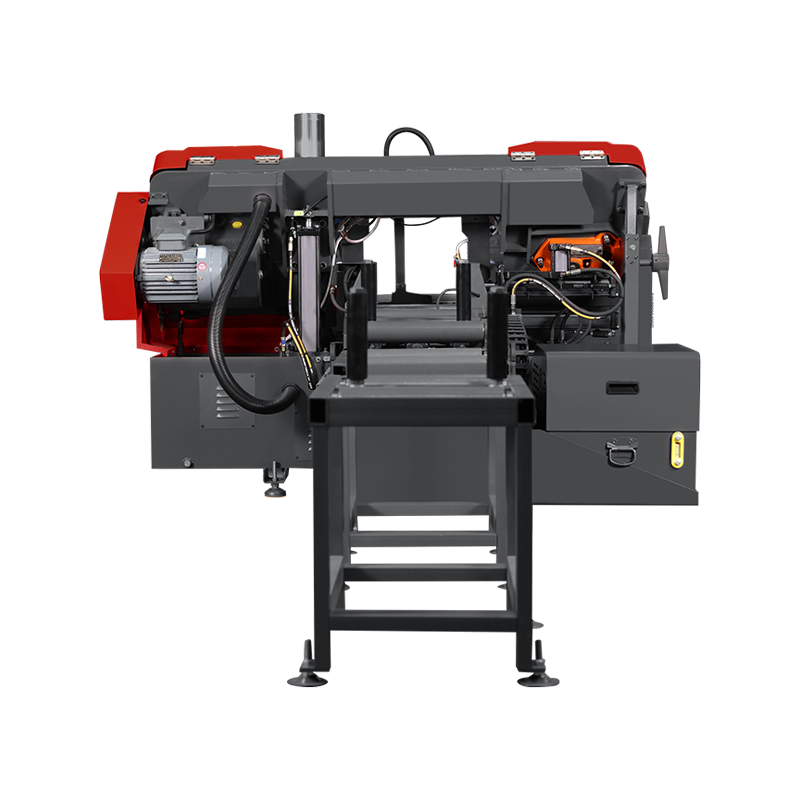
Metal fabrication often requires precise, consistent, and adaptable cutting solutions. Both the Rotary Angle Horizontal Metal Band Sawing Machine and the Horizontal Metal Cutting Band Sawing Machine are widely applied in modern workshops for cutting a variety of metals efficiently. Its ability to combine angular flexibility with horizontal stability makes it a practical option for many industrial applications. Handling Projects That Require Angled Cuts One of the primary reasons to use a rotary angle horizontal band saw is when the project involves multiple angled or bevel cuts. Unlike standard horizontal saws that primarily perform straight cuts, the rotary angle version allows the saw head to pivot to different angles without repositioning the workpiece. This feature saves time during setup and improves accuracy when cutting parts that must fit together precisely, such as in construction frames, metal brackets, or machine housings.The ability to rotate the cutting head is particularly beneficial for production lines where the same angle cut is repeated frequently. Once the desired angle is set, operators can make consistent cuts efficiently without constant realignment. This reduces operator workload and enhances overall productivity in batch processing environments. Cutting Large or Heavy Workpieces When working with long bars, thick pipes, or solid blocks of metal, stability becomes crucial. The horizontal configuration of the band saw distributes weight evenly and ensures smoother blade contact throughout the cut. For large-scale fabrication workshops, the horizontal band saw is also easier to load and secure. The clamping system holds the material firmly in place, ensuring consistent performance even during extended cutting cycles. This is why rotary angle horizontal machines are often chosen for heavy-duty applications in metal manufacturing and structural fabrication. Achieving Precision in Complex Fabrication When precision is a priority, the rotary angle horizontal band saw provides several operational benefits. Its adjustable feed control and variable speed functions allow users to tailor the cutting speed and pressure according to material type and thickness. The integrated guide bearings and blade tension control further enhance accuracy. Proper tension ensures a straight cutting path and prevents material deformation. Reducing Setup and Adjustment Time The rotary angle horizontal saw simplifies the cutting process because operators can adjust the angle directly on the machine without repositioning the material. This not only shortens preparation time but also reduces errors that can occur when moving heavy workpieces repeatedly.Operators can quickly shift between straight and angled cuts, allowing for versatile use in a single operation. For custom fabrication shops handling varied orders, this flexibility provides a clear advantage. It enables quick adaptation to different project requirements without additional jigs or fixtures. Supporting Continuous and High-Volume Operations The durability and consistent performance of the horizontal metal cutting band sawing machine make it suitable for continuous operation in production facilities. Its cooling and lubrication systems prevent overheating and extend blade life, ensuring smooth performance even during long shifts.When equipped with a rotary angle mechanism, the machine becomes even more versatile. Production teams can process components of various shapes and specifications using one setup, maintaining efficiency across different product lines. This helps balance productivity and cost control, particularly for companies aiming to optimize workflow while maintaining quality standards. Improving Operator Comfort and Safety Safety and ease of operation are important factors when selecting a metal cutting machine. The rotary angle horizontal design promotes a safer working environment by maintaining stable material positioning throughout the cutting process. The horizontal setup keeps the workpiece secured close to the table, reducing the risk of movement or unexpected blade contact.Additionally, many models are equipped with hydraulic feed systems, adjustable clamps, and clear angle indicators that simplify control. These design features reduce operator fatigue and allow for more precise adjustments during use.
Metal fabrication often requires precise, consistent, and adaptable cutting solutions. Both the Rotary Angle Horizontal Metal Band Sawing Machine and the Horizontal Metal Cutting Band Sawing Machine are widely applied in modern workshops for cutting a variety of metals efficiently. Its ability to combine angular flexibility with horizontal stability makes it a practical option for many industrial applications. Handling Projects That Require Angled Cuts One of the primary reasons to use a rotary angle horizontal band saw is when the project involves multiple angled or bevel cuts. Unlike standard horizontal saws that primarily perform straight cuts, the rotary angle version allows the saw head to pivot to different angles without repositioning the workpiece. This feature saves time during setup and improves accuracy when cutting parts that must fit together precisely, such as in construction frames, metal brackets, or machine housings.The ability to rotate the cutting head is particularly beneficial for production lines where the same angle cut is repeated frequently. Once the desired angle is set, operators can make consistent cuts efficiently without constant realignment. This reduces operator workload and enhances overall productivity in batch processing environments. Cutting Large or Heavy Workpieces When working with long bars, thick pipes, or solid blocks of metal, stability becomes crucial. The horizontal configuration of the band saw distributes weight evenly and ensures smoother blade contact throughout the cut. For large-scale fabrication workshops, the horizontal band saw is also easier to load and secure. The clamping system holds the material firmly in place, ensuring consistent performance even during extended cutting cycles. This is why rotary angle horizontal machines are often chosen for heavy-duty applications in metal manufacturing and structural fabrication. Achieving Precision in Complex Fabrication When precision is a priority, the rotary angle horizontal band saw provides several operational benefits. Its adjustable feed control and variable speed functions allow users to tailor the cutting speed and pressure according to material type and thickness. The integrated guide bearings and blade tension control further enhance accuracy. Proper tension ensures a straight cutting path and prevents material deformation. Reducing Setup and Adjustment Time The rotary angle horizontal saw simplifies the cutting process because operators can adjust the angle directly on the machine without repositioning the material. This not only shortens preparation time but also reduces errors that can occur when moving heavy workpieces repeatedly.Operators can quickly shift between straight and angled cuts, allowing for versatile use in a single operation. For custom fabrication shops handling varied orders, this flexibility provides a clear advantage. It enables quick adaptation to different project requirements without additional jigs or fixtures. Supporting Continuous and High-Volume Operations The durability and consistent performance of the horizontal metal cutting band sawing machine make it suitable for continuous operation in production facilities. Its cooling and lubrication systems prevent overheating and extend blade life, ensuring smooth performance even during long shifts.When equipped with a rotary angle mechanism, the machine becomes even more versatile. Production teams can process components of various shapes and specifications using one setup, maintaining efficiency across different product lines. This helps balance productivity and cost control, particularly for companies aiming to optimize workflow while maintaining quality standards. Improving Operator Comfort and Safety Safety and ease of operation are important factors when selecting a metal cutting machine. The rotary angle horizontal design promotes a safer working environment by maintaining stable material positioning throughout the cutting process. The horizontal setup keeps the workpiece secured close to the table, reducing the risk of movement or unexpected blade contact.Additionally, many models are equipped with hydraulic feed systems, adjustable clamps, and clear angle indicators that simplify control. These design features reduce operator fatigue and allow for more precise adjustments during use.
 READ MORE
READ MORE
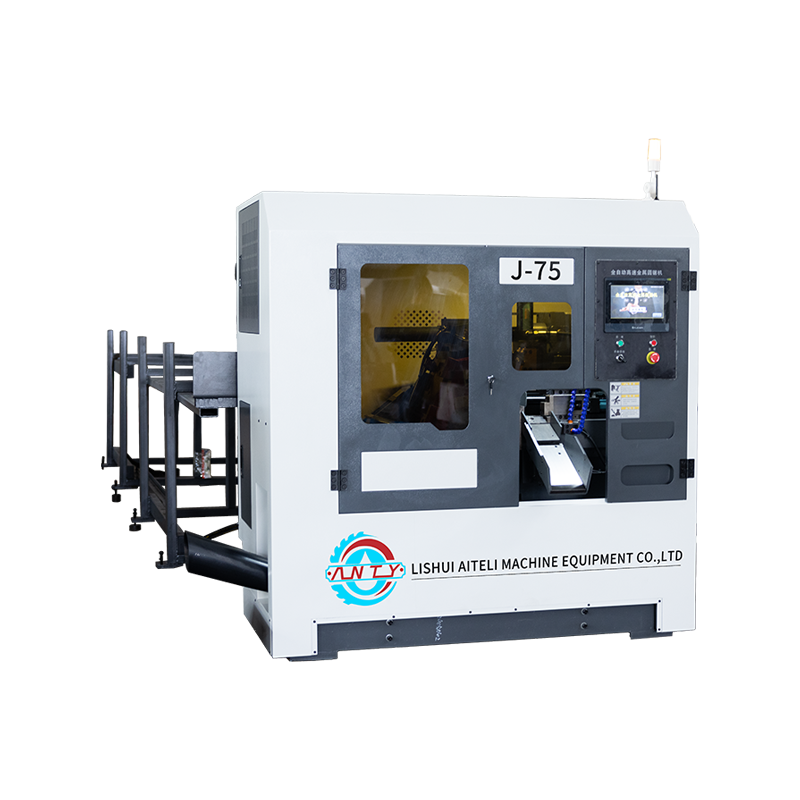
When it comes to achieving precision and stability in metal cutting, both the Rotary Angle Horizontal Metal Band Sawing Machine and the Horizontal Metal Cutting Band Sawing Machine are valued for their well-engineered structures and versatile functions. These machines are designed to meet a variety of industrial needs—from straight-line cutting to complex angular operations—making them suitable for manufacturers dealing with diverse material shapes and sizes. Understanding the specific advantages of their design can help operators select the right machine setup and achieve greater efficiency during operation. Stability Through Horizontal Configuration The horizontal frame also supports the material more effectively during cutting, reducing the chance of movement or misalignment. This stability is especially useful when working with heavy or long metal pieces. The reduced vibration not only improves accuracy but also prolongs the lifespan of the blade and machine components by decreasing wear over time. Flexible Rotary Angle for Complex Cuts The rotary angle function distinguishes this machine from standard saws. It enables operators to adjust the cutting angle easily, allowing for bevel cuts or complex shapes without repositioning the workpiece. This flexibility saves time during setup and helps maintain consistent precision across multiple cuts.By rotating the saw frame rather than the material, users can perform angled cuts more efficiently. This feature is particularly valuable in applications where parts need to fit together at specific angles, such as in structural assemblies, frames, or customized machinery components. The ability to achieve accurate angular cuts without additional fixtures or repositioning simplifies workflow and reduces material waste. Controlled Cutting Speed for Material Adaptation Both rotary angle and horizontal metal band sawing machines include variable speed adjustment systems that allow the operator to control the cutting speed according to material type. Harder metals require slower speeds to prevent blade overheating, while softer materials can be cut at faster rates.This variable speed function offers flexibility in handling different metals like carbon steel, stainless steel, and aluminum. The ability to fine-tune these settings also contributes to longer blade life and lower operating costs, as fewer blade replacements are needed. Enhanced Cutting Precision and Surface Quality The precision of a metal band saw depends heavily on its alignment, blade tension, and feed rate. The rotary angle horizontal design incorporates a stable guiding system that keeps the blade aligned even during extended operations. Moreover, the combination of controlled feed pressure and consistent blade movement results in smooth, burr-free surfaces. This reduces the need for secondary finishing operations, which can save both time and resources. For workshops where accuracy is a daily requirement, maintaining the saw’s alignment and calibration plays a key role in achieving repeatable and consistent results. Simplified Operation and Ergonomic Design Ease of operation is another factor that contributes to the efficiency of the rotary angle horizontal saw. The machine layout is designed for intuitive control, allowing operators to make precise adjustments with minimal effort. Clear angle indicators, adjustable clamps, and hydraulic feed systems make it straightforward to position materials correctly and monitor progress during cutting.The ergonomic design also reduces operator fatigue. With features like accessible control panels, stable work surfaces, and smooth hydraulic operation, users can maintain better focus on accuracy and process management rather than manual adjustments. This setup is especially beneficial in production environments where long hours of continuous cutting are required. Durability and Cost Efficiency The durability of the rotary angle horizontal band saw is supported by its use of wear-resistant saw blades and reinforced structural components. These machines are built to withstand extended operation under demanding conditions. The robust construction reduces the need for frequent maintenance and helps maintain consistent performance over time.Furthermore, the efficiency of the sawing process directly translates into cost savings. Over time, these advantages make the machine a practical choice for both small-scale fabricators and larger industrial users seeking dependable output with controlled costs.
When it comes to achieving precision and stability in metal cutting, both the Rotary Angle Horizontal Metal Band Sawing Machine and the Horizontal Metal Cutting Band Sawing Machine are valued for their well-engineered structures and versatile functions. These machines are designed to meet a variety of industrial needs—from straight-line cutting to complex angular operations—making them suitable for manufacturers dealing with diverse material shapes and sizes. Understanding the specific advantages of their design can help operators select the right machine setup and achieve greater efficiency during operation. Stability Through Horizontal Configuration The horizontal frame also supports the material more effectively during cutting, reducing the chance of movement or misalignment. This stability is especially useful when working with heavy or long metal pieces. The reduced vibration not only improves accuracy but also prolongs the lifespan of the blade and machine components by decreasing wear over time. Flexible Rotary Angle for Complex Cuts The rotary angle function distinguishes this machine from standard saws. It enables operators to adjust the cutting angle easily, allowing for bevel cuts or complex shapes without repositioning the workpiece. This flexibility saves time during setup and helps maintain consistent precision across multiple cuts.By rotating the saw frame rather than the material, users can perform angled cuts more efficiently. This feature is particularly valuable in applications where parts need to fit together at specific angles, such as in structural assemblies, frames, or customized machinery components. The ability to achieve accurate angular cuts without additional fixtures or repositioning simplifies workflow and reduces material waste. Controlled Cutting Speed for Material Adaptation Both rotary angle and horizontal metal band sawing machines include variable speed adjustment systems that allow the operator to control the cutting speed according to material type. Harder metals require slower speeds to prevent blade overheating, while softer materials can be cut at faster rates.This variable speed function offers flexibility in handling different metals like carbon steel, stainless steel, and aluminum. The ability to fine-tune these settings also contributes to longer blade life and lower operating costs, as fewer blade replacements are needed. Enhanced Cutting Precision and Surface Quality The precision of a metal band saw depends heavily on its alignment, blade tension, and feed rate. The rotary angle horizontal design incorporates a stable guiding system that keeps the blade aligned even during extended operations. Moreover, the combination of controlled feed pressure and consistent blade movement results in smooth, burr-free surfaces. This reduces the need for secondary finishing operations, which can save both time and resources. For workshops where accuracy is a daily requirement, maintaining the saw’s alignment and calibration plays a key role in achieving repeatable and consistent results. Simplified Operation and Ergonomic Design Ease of operation is another factor that contributes to the efficiency of the rotary angle horizontal saw. The machine layout is designed for intuitive control, allowing operators to make precise adjustments with minimal effort. Clear angle indicators, adjustable clamps, and hydraulic feed systems make it straightforward to position materials correctly and monitor progress during cutting.The ergonomic design also reduces operator fatigue. With features like accessible control panels, stable work surfaces, and smooth hydraulic operation, users can maintain better focus on accuracy and process management rather than manual adjustments. This setup is especially beneficial in production environments where long hours of continuous cutting are required. Durability and Cost Efficiency The durability of the rotary angle horizontal band saw is supported by its use of wear-resistant saw blades and reinforced structural components. These machines are built to withstand extended operation under demanding conditions. The robust construction reduces the need for frequent maintenance and helps maintain consistent performance over time.Furthermore, the efficiency of the sawing process directly translates into cost savings. Over time, these advantages make the machine a practical choice for both small-scale fabricators and larger industrial users seeking dependable output with controlled costs.
 READ MORE
READ MORE
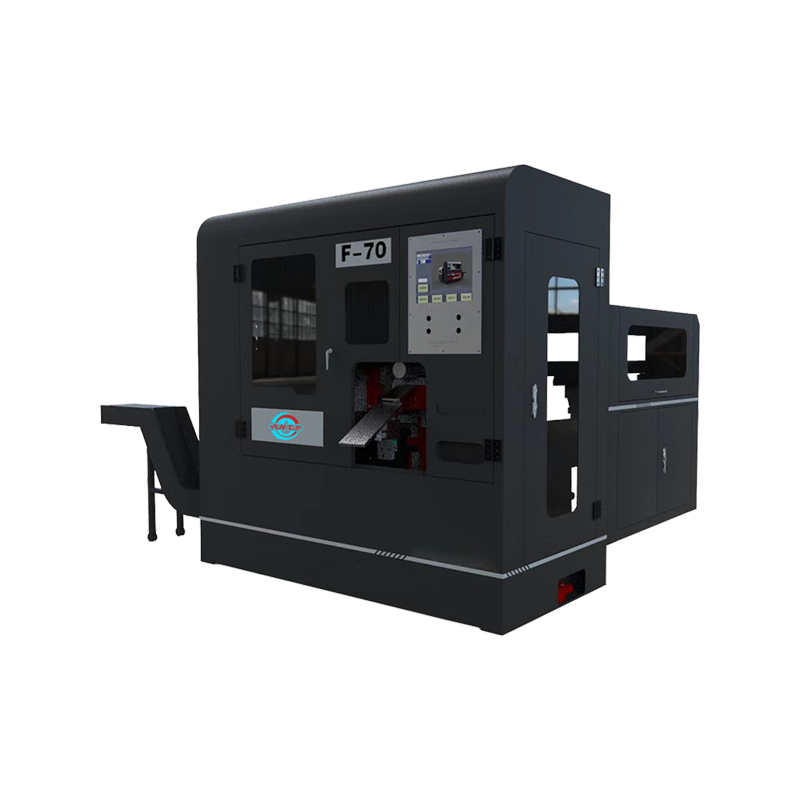
For workshops and production facilities working with metal materials, achieving efficient and accurate cuts depends largely on proper machine adjustment. Both the Rotary Angle Horizontal Metal Band Sawing Machine and the Horizontal Metal Cutting Band Sawing Machine are widely used for their ability to handle complex cutting angles, stable operation, and adaptability to various materials. To achieve higher productivity and extend machine life, correct adjustment procedures are essential. Understanding how to set up and fine-tune these machines helps operators maintain consistent performance across different cutting conditions. Understanding the Machine’s Core Structure Before adjusting any part of the machine, operators should familiarize themselves with its primary components and mechanisms. The rotary angle horizontal saw includes a movable saw head, adjustable worktable, hydraulic system, and variable speed controls. The horizontal configuration ensures steady blade contact with the material, which reduces vibration and cutting deviation.The horizontal metal cutting band saw typically consists of a fixed base, blade tensioning system, and feed control mechanism. Its horizontal layout makes it suitable for cutting long bars or heavy metal blocks with improved stability. Knowing the machine’s key parts helps operators identify where adjustments can improve efficiency without causing unnecessary strain on components. Setting the Cutting Angle Correctly One of the main features of the rotary angle horizontal design is the adjustable cutting angle. Operators can rotate the saw frame to achieve bevel cuts without repositioning the material. To ensure precision, it’s important to check that the pivot axis moves smoothly and that angle indicators are clearly visible. When adjusting the angle: Verify that the clamping device is securely holding the material before rotation.Loosen the locking mechanism slightly to allow free movement of the saw frame.Set the desired angle gradually, using the scale for reference, and re-tighten the lock once aligned.For repetitive cuts at the same angle, marking reference points on the scale helps save setup time in future operations. Adjusting Cutting Speed and Feed Rate Efficient cutting relies heavily on proper control of both speed and feed rate. The variable speed system on these machines allows operators to adapt to different material types and thicknesses. For example, softer metals such as aluminum can handle faster speeds, while harder materials like stainless steel require slower cutting to prevent blade wear and excessive heat buildup. To set the correct speed: Begin with a moderate speed and observe the blade performance and chip formation.Adjust gradually to find the range where the blade moves smoothly without excessive friction or vibration.For consistent results, maintain proper lubrication and cooling during operation.Feed rate should also be adjusted according to material hardness and blade width. Too fast a feed can cause rough surfaces or blade breakage, while too slow a feed may cause overheating. Operators can use the hydraulic control lever or digital interface (depending on machine type) to fine-tune the feed motion. Ensuring Proper Blade Tension and Alignment Blade tension and alignment are critical for maintaining cutting accuracy and extending tool life.Before each operation, check that the blade tension matches the manufacturer’s recommended settings. Many machines include a tension gauge or digital display to assist with this step. To ensure alignment: Rotate the blade manually and observe whether it runs evenly along the wheel path.Adjust the guide bearings and tracking controls until the blade stays centered.These checks prevent excessive wear and help maintain consistent cutting performance even in continuous operation. Using the Bevel Cutting Function Effectively For projects requiring multiple angled cuts, proper use of the bevel cutting feature can significantly improve efficiency. When setting up the rotary angle horizontal band saw, align the saw frame according to the desired bevel angle and confirm that both ends of the blade are in stable contact with the material. To optimize performance: Ensure the saw head moves smoothly during angle adjustments.Apply moderate feed pressure to prevent blade drift.If cutting thicker materials, use coolant or cutting oil to control temperature and maintain blade sharpness.By mastering these small adjustments, operators can achieve clean bevel edges that fit precisely into larger assemblies. Maintaining Stability During Operation Machine vibration is a common cause of cutting inaccuracies. The horizontal design naturally reduces vibration, but proper leveling and material clamping are still vital. The workpiece should be tightly fixed using adjustable clamps, especially for irregularly shaped metals. Check that the base surface is even and that all bolts are tightened before starting the saw.
For workshops and production facilities working with metal materials, achieving efficient and accurate cuts depends largely on proper machine adjustment. Both the Rotary Angle Horizontal Metal Band Sawing Machine and the Horizontal Metal Cutting Band Sawing Machine are widely used for their ability to handle complex cutting angles, stable operation, and adaptability to various materials. To achieve higher productivity and extend machine life, correct adjustment procedures are essential. Understanding how to set up and fine-tune these machines helps operators maintain consistent performance across different cutting conditions. Understanding the Machine’s Core Structure Before adjusting any part of the machine, operators should familiarize themselves with its primary components and mechanisms. The rotary angle horizontal saw includes a movable saw head, adjustable worktable, hydraulic system, and variable speed controls. The horizontal configuration ensures steady blade contact with the material, which reduces vibration and cutting deviation.The horizontal metal cutting band saw typically consists of a fixed base, blade tensioning system, and feed control mechanism. Its horizontal layout makes it suitable for cutting long bars or heavy metal blocks with improved stability. Knowing the machine’s key parts helps operators identify where adjustments can improve efficiency without causing unnecessary strain on components. Setting the Cutting Angle Correctly One of the main features of the rotary angle horizontal design is the adjustable cutting angle. Operators can rotate the saw frame to achieve bevel cuts without repositioning the material. To ensure precision, it’s important to check that the pivot axis moves smoothly and that angle indicators are clearly visible. When adjusting the angle: Verify that the clamping device is securely holding the material before rotation.Loosen the locking mechanism slightly to allow free movement of the saw frame.Set the desired angle gradually, using the scale for reference, and re-tighten the lock once aligned.For repetitive cuts at the same angle, marking reference points on the scale helps save setup time in future operations. Adjusting Cutting Speed and Feed Rate Efficient cutting relies heavily on proper control of both speed and feed rate. The variable speed system on these machines allows operators to adapt to different material types and thicknesses. For example, softer metals such as aluminum can handle faster speeds, while harder materials like stainless steel require slower cutting to prevent blade wear and excessive heat buildup. To set the correct speed: Begin with a moderate speed and observe the blade performance and chip formation.Adjust gradually to find the range where the blade moves smoothly without excessive friction or vibration.For consistent results, maintain proper lubrication and cooling during operation.Feed rate should also be adjusted according to material hardness and blade width. Too fast a feed can cause rough surfaces or blade breakage, while too slow a feed may cause overheating. Operators can use the hydraulic control lever or digital interface (depending on machine type) to fine-tune the feed motion. Ensuring Proper Blade Tension and Alignment Blade tension and alignment are critical for maintaining cutting accuracy and extending tool life.Before each operation, check that the blade tension matches the manufacturer’s recommended settings. Many machines include a tension gauge or digital display to assist with this step. To ensure alignment: Rotate the blade manually and observe whether it runs evenly along the wheel path.Adjust the guide bearings and tracking controls until the blade stays centered.These checks prevent excessive wear and help maintain consistent cutting performance even in continuous operation. Using the Bevel Cutting Function Effectively For projects requiring multiple angled cuts, proper use of the bevel cutting feature can significantly improve efficiency. When setting up the rotary angle horizontal band saw, align the saw frame according to the desired bevel angle and confirm that both ends of the blade are in stable contact with the material. To optimize performance: Ensure the saw head moves smoothly during angle adjustments.Apply moderate feed pressure to prevent blade drift.If cutting thicker materials, use coolant or cutting oil to control temperature and maintain blade sharpness.By mastering these small adjustments, operators can achieve clean bevel edges that fit precisely into larger assemblies. Maintaining Stability During Operation Machine vibration is a common cause of cutting inaccuracies. The horizontal design naturally reduces vibration, but proper leveling and material clamping are still vital. The workpiece should be tightly fixed using adjustable clamps, especially for irregularly shaped metals. Check that the base surface is even and that all bolts are tightened before starting the saw.
 READ MORE
READ MORE

For industries requiring precise and versatile metal processing, both the Rotary Angle Horizontal Metal Band Sawing Machine and Horizontal Metal Cutting Band Sawing Machine play an essential role in shaping materials into desired forms. These machines are widely used in manufacturing plants, workshops, and fabrication centers where accuracy, stability, and efficiency are crucial. Their design supports a broad range of cutting needs, including straight and angled sections, making them suitable for complex geometries and custom fabrication projects. Precision Engineering for Versatile Cutting Needs A key advantage of using a rotary angle horizontal band sawing machine is its flexibility in handling diverse materials and shapes. The rotary function allows the saw frame to be adjusted easily for bevel or angular cuts without repositioning the workpiece. This not only saves setup time but also ensures consistent accuracy when cutting different angles. The horizontal configuration offers enhanced contact between the saw blade and material, providing smoother transitions and reducing vibration during the process.In contrast, a standard horizontal metal cutting band sawing machine excels in achieving straight, precise cuts across various metal types such as steel, aluminum, or brass. The combination of variable speed control and a stable mechanical structure allows operators to fine-tune the cutting speed based on the material’s hardness and thickness. Efficiency and Stability Through Industrial Design The horizontal layout of these machines ensures better load distribution during operation. A well-balanced machine base reduces operational noise and vibration, enhancing operator comfort while maintaining a stable working environment.The inclusion of variable speed adjustment further improves performance. Operators can choose appropriate cutting speeds for different materials, preventing overheating and prolonging the lifespan of the saw blade. The saw’s adjustable speed range also allows users to optimize cutting efficiency for different production volumes — from small-scale workshops to large manufacturing facilities. Enhanced Cutting Precision and Cost Control Precision is one of the main concerns in metal processing. Rotary angle and horizontal band sawing machines are designed with advanced tension control and accurate feed mechanisms, ensuring uniform pressure and a clean cutting surface. Because of their efficient power transmission and minimal heat buildup, these machines help prevent material distortion, which is particularly important for high-precision projects like structural components, machinery parts, and metal fixtures.Another aspect that attracts operators is the reduced operational cost. The machines use high-quality saw blades treated for wear and corrosion resistance. This treatment maintains sharpness over extended periods, lowering the frequency of replacements and reducing overall maintenance expenses. Combined with the machine’s efficient energy usage and stable output, these features contribute to long-term economic benefits for businesses focusing on productivity and sustainability. Meeting Complex Shape Requirements When manufacturing parts that require multiple angled cuts or non-standard geometries, the rotary angle horizontal design becomes particularly advantageous. By adjusting the saw head rather than repositioning the material, the machine achieves precise bevel cuts quickly. This is especially beneficial in industries producing frameworks, machinery housings, or metal furniture, where accuracy in multiple planes is critical.For straight cutting applications, the horizontal metal cutting band sawing machine provides a stable and consistent feed motion, ensuring clean edges without burring. When combined with proper coolant systems, these machines maintain cutting quality even during long operating cycles. This adaptability allows fabricators to meet a wide variety of production requirements using one piece of equipment. Practical Considerations for Operators In daily operations, usability and maintenance are important for ensuring long-term efficiency. Modern horizontal band sawing machines feature user-friendly controls and ergonomic structures, making them easier to operate even for technicians with limited experience. Routine maintenance mainly involves checking blade condition, tension levels, and lubrication. Proper training and regular inspection also help prevent unexpected wear, ensuring consistent performance across multiple production cycles.
For industries requiring precise and versatile metal processing, both the Rotary Angle Horizontal Metal Band Sawing Machine and Horizontal Metal Cutting Band Sawing Machine play an essential role in shaping materials into desired forms. These machines are widely used in manufacturing plants, workshops, and fabrication centers where accuracy, stability, and efficiency are crucial. Their design supports a broad range of cutting needs, including straight and angled sections, making them suitable for complex geometries and custom fabrication projects. Precision Engineering for Versatile Cutting Needs A key advantage of using a rotary angle horizontal band sawing machine is its flexibility in handling diverse materials and shapes. The rotary function allows the saw frame to be adjusted easily for bevel or angular cuts without repositioning the workpiece. This not only saves setup time but also ensures consistent accuracy when cutting different angles. The horizontal configuration offers enhanced contact between the saw blade and material, providing smoother transitions and reducing vibration during the process.In contrast, a standard horizontal metal cutting band sawing machine excels in achieving straight, precise cuts across various metal types such as steel, aluminum, or brass. The combination of variable speed control and a stable mechanical structure allows operators to fine-tune the cutting speed based on the material’s hardness and thickness. Efficiency and Stability Through Industrial Design The horizontal layout of these machines ensures better load distribution during operation. A well-balanced machine base reduces operational noise and vibration, enhancing operator comfort while maintaining a stable working environment.The inclusion of variable speed adjustment further improves performance. Operators can choose appropriate cutting speeds for different materials, preventing overheating and prolonging the lifespan of the saw blade. The saw’s adjustable speed range also allows users to optimize cutting efficiency for different production volumes — from small-scale workshops to large manufacturing facilities. Enhanced Cutting Precision and Cost Control Precision is one of the main concerns in metal processing. Rotary angle and horizontal band sawing machines are designed with advanced tension control and accurate feed mechanisms, ensuring uniform pressure and a clean cutting surface. Because of their efficient power transmission and minimal heat buildup, these machines help prevent material distortion, which is particularly important for high-precision projects like structural components, machinery parts, and metal fixtures.Another aspect that attracts operators is the reduced operational cost. The machines use high-quality saw blades treated for wear and corrosion resistance. This treatment maintains sharpness over extended periods, lowering the frequency of replacements and reducing overall maintenance expenses. Combined with the machine’s efficient energy usage and stable output, these features contribute to long-term economic benefits for businesses focusing on productivity and sustainability. Meeting Complex Shape Requirements When manufacturing parts that require multiple angled cuts or non-standard geometries, the rotary angle horizontal design becomes particularly advantageous. By adjusting the saw head rather than repositioning the material, the machine achieves precise bevel cuts quickly. This is especially beneficial in industries producing frameworks, machinery housings, or metal furniture, where accuracy in multiple planes is critical.For straight cutting applications, the horizontal metal cutting band sawing machine provides a stable and consistent feed motion, ensuring clean edges without burring. When combined with proper coolant systems, these machines maintain cutting quality even during long operating cycles. This adaptability allows fabricators to meet a wide variety of production requirements using one piece of equipment. Practical Considerations for Operators In daily operations, usability and maintenance are important for ensuring long-term efficiency. Modern horizontal band sawing machines feature user-friendly controls and ergonomic structures, making them easier to operate even for technicians with limited experience. Routine maintenance mainly involves checking blade condition, tension levels, and lubrication. Proper training and regular inspection also help prevent unexpected wear, ensuring consistent performance across multiple production cycles.
 READ MORE
READ MORE
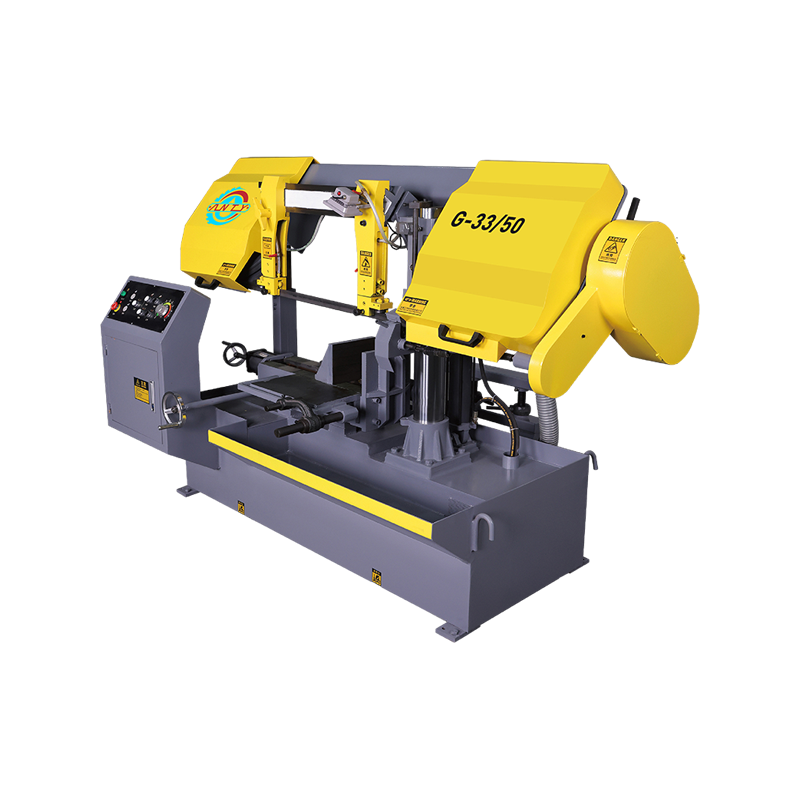
Workshops that integrate a steel pipe cutting machine or a vertical metal band sawing machine often focus on how user-friendly the equipment is for daily operations. A machine may deliver precision cutting and high output, but if it is difficult to operate or maintain, productivity can still suffer. The Intelligent Control System Precision Cutting CNC Full Automatic Band Saw Machine has been developed with operator needs in mind, making complex cutting processes more manageable without requiring extensive training. Simplified Control Interface for Daily Use One of the main reasons this equipment is considered operator-friendly lies in its intuitive control system. The interface is designed with clear functions that reduce the learning curve for new users. Operators can adjust cutting parameters, monitor progress, and handle automated functions with minimal manual intervention. This not only saves time but also reduces the likelihood of errors during production runs, particularly in busy workshops where multiple jobs are handled in sequence. Automated Functions that Reduce Manual Work For tasks like cutting steel pipes or preparing complex profiles, automation is critical. The vertical metal band sawing machine integrates CNC automation to handle feeding, positioning, and cutting adjustments. This creates a safer and more efficient working environment, where the machine takes on repetitive tasks and the operator focuses on overseeing the process. Flexibility Across Materials and Applications Workshops often deal with a variety of materials ranging from steel and aluminum to copper alloys. The machine’s adaptability allows operators to switch between different metals without lengthy recalibration. This flexibility means fewer disruptions to workflow, making the equipment easier to integrate into diverse production environments. Whether used for structural fabrication, electronics components, or hardware parts, the operator can manage cutting requirements without constant adjustments. Safety Features that Support Confidence Operating cutting machinery involves risks, which is why safety is a critical aspect of operator-friendly design. The Intelligent Control System Precision Cutting CNC Full Automatic Band Saw Machine incorporates multiple safety protections, including overload monitoring and emergency stop buttons. These features give operators confidence in their working environment, reducing stress and allowing them to focus on the quality of output. In addition, automated safety checks limit the possibility of accidents caused by human oversight. Maintenance Made Straightforward Maintenance is often seen as a challenge in workshops, especially when equipment downtime affects production schedules. This machine adopts a modular design that simplifies part replacement and reduces maintenance time. Operators can quickly identify worn components and replace them without requiring specialized technicians. Routine upkeep tasks are clearly structured, lowering costs and preventing extended interruptions in production. Training and Operator Adaptability Another operator-friendly element is the reduced training requirement. Because the machine’s interface is easy to navigate and its processes are highly automated, operators do not need advanced technical backgrounds to become proficient. Training sessions are shorter, and staff can gain hands-on experience without the need for complicated manuals. This ensures that workshops can onboard new operators quickly, maintaining consistent productivity even when staffing changes occur. Long-Term Stability in Daily Operation For operators, stability means less time troubleshooting and more time focusing on tasks. The machine is constructed with durable materials and advanced manufacturing techniques, ensuring continuous and steady operation. With fewer unexpected breakdowns, operators can trust that the equipment will perform consistently across multiple shifts. This stability directly benefits workflow management and reduces frustration among staff who rely on dependable tools to perform their jobs.
Workshops that integrate a steel pipe cutting machine or a vertical metal band sawing machine often focus on how user-friendly the equipment is for daily operations. A machine may deliver precision cutting and high output, but if it is difficult to operate or maintain, productivity can still suffer. The Intelligent Control System Precision Cutting CNC Full Automatic Band Saw Machine has been developed with operator needs in mind, making complex cutting processes more manageable without requiring extensive training. Simplified Control Interface for Daily Use One of the main reasons this equipment is considered operator-friendly lies in its intuitive control system. The interface is designed with clear functions that reduce the learning curve for new users. Operators can adjust cutting parameters, monitor progress, and handle automated functions with minimal manual intervention. This not only saves time but also reduces the likelihood of errors during production runs, particularly in busy workshops where multiple jobs are handled in sequence. Automated Functions that Reduce Manual Work For tasks like cutting steel pipes or preparing complex profiles, automation is critical. The vertical metal band sawing machine integrates CNC automation to handle feeding, positioning, and cutting adjustments. This creates a safer and more efficient working environment, where the machine takes on repetitive tasks and the operator focuses on overseeing the process. Flexibility Across Materials and Applications Workshops often deal with a variety of materials ranging from steel and aluminum to copper alloys. The machine’s adaptability allows operators to switch between different metals without lengthy recalibration. This flexibility means fewer disruptions to workflow, making the equipment easier to integrate into diverse production environments. Whether used for structural fabrication, electronics components, or hardware parts, the operator can manage cutting requirements without constant adjustments. Safety Features that Support Confidence Operating cutting machinery involves risks, which is why safety is a critical aspect of operator-friendly design. The Intelligent Control System Precision Cutting CNC Full Automatic Band Saw Machine incorporates multiple safety protections, including overload monitoring and emergency stop buttons. These features give operators confidence in their working environment, reducing stress and allowing them to focus on the quality of output. In addition, automated safety checks limit the possibility of accidents caused by human oversight. Maintenance Made Straightforward Maintenance is often seen as a challenge in workshops, especially when equipment downtime affects production schedules. This machine adopts a modular design that simplifies part replacement and reduces maintenance time. Operators can quickly identify worn components and replace them without requiring specialized technicians. Routine upkeep tasks are clearly structured, lowering costs and preventing extended interruptions in production. Training and Operator Adaptability Another operator-friendly element is the reduced training requirement. Because the machine’s interface is easy to navigate and its processes are highly automated, operators do not need advanced technical backgrounds to become proficient. Training sessions are shorter, and staff can gain hands-on experience without the need for complicated manuals. This ensures that workshops can onboard new operators quickly, maintaining consistent productivity even when staffing changes occur. Long-Term Stability in Daily Operation For operators, stability means less time troubleshooting and more time focusing on tasks. The machine is constructed with durable materials and advanced manufacturing techniques, ensuring continuous and steady operation. With fewer unexpected breakdowns, operators can trust that the equipment will perform consistently across multiple shifts. This stability directly benefits workflow management and reduces frustration among staff who rely on dependable tools to perform their jobs.
 READ MORE
READ MORE
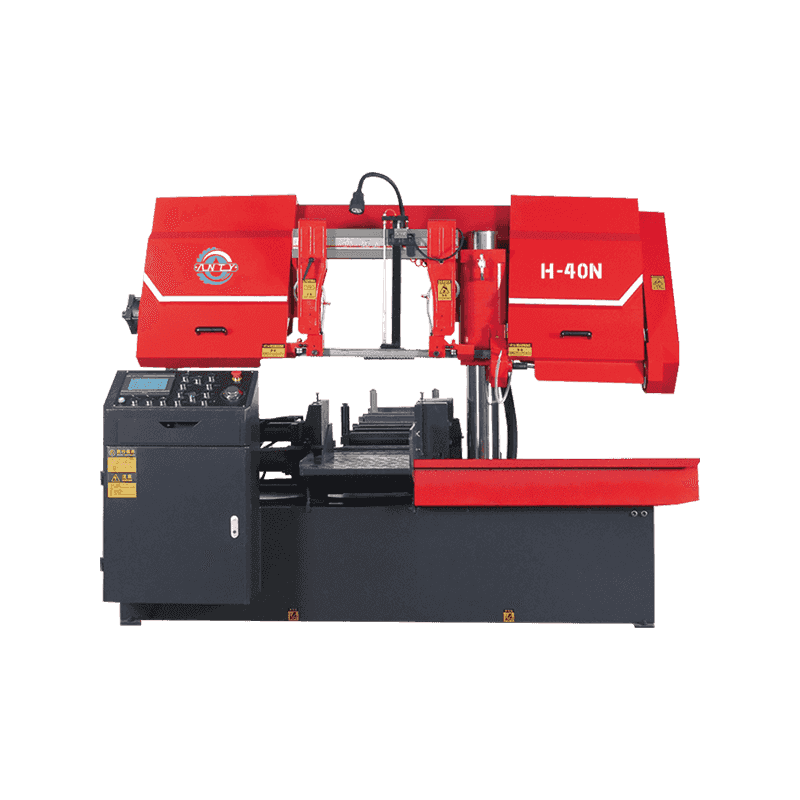
Modern workshops increasingly depend on specialized equipment such as a steel pipe cutting machine and a vertical metal band sawing machine to handle diverse production demands. With the development of automated and intelligent technologies, machines like the Intelligent Control System Precision Cutting CNC Full Automatic Band Saw Machine are being integrated into daily operations to support precision, efficiency, and adaptability. Understanding where this type of equipment can be applied helps workshop managers make informed decisions about investment and production planning. Meeting the Demands of Metal Processing Workshops In workshops focused on metal processing, a vertical metal band sawing machine plays a significant role in cutting steel, aluminum, copper, and other alloys. The integration of CNC control and automated feeding functions allows for consistent and accurate results, which is essential when producing components for machinery, automotive parts, or aerospace structures. This equipment provides the ability to manage both small-scale custom jobs and large-scale production runs, supporting flexibility without compromising quality. Supporting Steel Pipe Cutting and Structural Fabrication When working with steel pipe cutting machines, accuracy is critical to ensure smooth connections, proper welding, and reduced material waste. A fully automatic band saw machine equipped with intelligent control features enhances cutting precision and ensures consistent surface quality, which is particularly important in structural fabrication and construction projects. By reducing the need for repeated adjustments, it helps save labor and material while improving efficiency. Enhancing Operations in the Electronics and Electrical Industry The electronics and electrical industry requires components with strict dimensional accuracy. Vertical metal band sawing machines allow workshops to cut metal housings, brackets, and connectors to precise measurements. For companies handling delicate parts that need high precision, this type of equipment ensures smoother processes and better compatibility with downstream assembly lines. Practical Value for Construction-Related Applications Construction workshops often need to prepare aluminum alloy doors, window frames, and steel structures.Their ability to handle different profiles and dimensions makes them adaptable to construction industry requirements. This not only supports faster turnaround times but also contributes to cost control by reducing energy consumption and operator time. Benefits for Hardware Processing Workshops Hardware processing often involves stainless steel, brass, and copper alloys, where quality cutting directly affects the usability of the final product. Vertical band saw machines designed with modular construction and advanced control systems enable easy adjustment for different materials. They also provide smooth edges and consistent thickness, reducing the need for extensive secondary processing. This efficiency is particularly valuable in hardware manufacturing, where time-to-market can impact competitiveness. Operational Advantages for Workshop Managers For workshop managers, ease of use is a major consideration. Maintenance is also simplified with modular components, allowing parts to be replaced quickly without long downtime. Integrated safety systems such as overload protection and emergency stop buttons ensure safer working environments. These features not only support productivity but also enhance workplace safety standards. Long-Term Stability and After-Sales Support Another aspect that strengthens workshop operations is the long-term stability of automated cutting equipment. Built with durable materials and advanced production techniques, the Intelligent Control System Precision Cutting CNC Full Automatic Band Saw Machine ensures continuous operation with reduced failure rates. In addition, comprehensive service covering installation, training, and maintenance helps workshops maintain smooth production and reduce unexpected interruptions.
Modern workshops increasingly depend on specialized equipment such as a steel pipe cutting machine and a vertical metal band sawing machine to handle diverse production demands. With the development of automated and intelligent technologies, machines like the Intelligent Control System Precision Cutting CNC Full Automatic Band Saw Machine are being integrated into daily operations to support precision, efficiency, and adaptability. Understanding where this type of equipment can be applied helps workshop managers make informed decisions about investment and production planning. Meeting the Demands of Metal Processing Workshops In workshops focused on metal processing, a vertical metal band sawing machine plays a significant role in cutting steel, aluminum, copper, and other alloys. The integration of CNC control and automated feeding functions allows for consistent and accurate results, which is essential when producing components for machinery, automotive parts, or aerospace structures. This equipment provides the ability to manage both small-scale custom jobs and large-scale production runs, supporting flexibility without compromising quality. Supporting Steel Pipe Cutting and Structural Fabrication When working with steel pipe cutting machines, accuracy is critical to ensure smooth connections, proper welding, and reduced material waste. A fully automatic band saw machine equipped with intelligent control features enhances cutting precision and ensures consistent surface quality, which is particularly important in structural fabrication and construction projects. By reducing the need for repeated adjustments, it helps save labor and material while improving efficiency. Enhancing Operations in the Electronics and Electrical Industry The electronics and electrical industry requires components with strict dimensional accuracy. Vertical metal band sawing machines allow workshops to cut metal housings, brackets, and connectors to precise measurements. For companies handling delicate parts that need high precision, this type of equipment ensures smoother processes and better compatibility with downstream assembly lines. Practical Value for Construction-Related Applications Construction workshops often need to prepare aluminum alloy doors, window frames, and steel structures.Their ability to handle different profiles and dimensions makes them adaptable to construction industry requirements. This not only supports faster turnaround times but also contributes to cost control by reducing energy consumption and operator time. Benefits for Hardware Processing Workshops Hardware processing often involves stainless steel, brass, and copper alloys, where quality cutting directly affects the usability of the final product. Vertical band saw machines designed with modular construction and advanced control systems enable easy adjustment for different materials. They also provide smooth edges and consistent thickness, reducing the need for extensive secondary processing. This efficiency is particularly valuable in hardware manufacturing, where time-to-market can impact competitiveness. Operational Advantages for Workshop Managers For workshop managers, ease of use is a major consideration. Maintenance is also simplified with modular components, allowing parts to be replaced quickly without long downtime. Integrated safety systems such as overload protection and emergency stop buttons ensure safer working environments. These features not only support productivity but also enhance workplace safety standards. Long-Term Stability and After-Sales Support Another aspect that strengthens workshop operations is the long-term stability of automated cutting equipment. Built with durable materials and advanced production techniques, the Intelligent Control System Precision Cutting CNC Full Automatic Band Saw Machine ensures continuous operation with reduced failure rates. In addition, comprehensive service covering installation, training, and maintenance helps workshops maintain smooth production and reduce unexpected interruptions.
 READ MORE
READ MORE
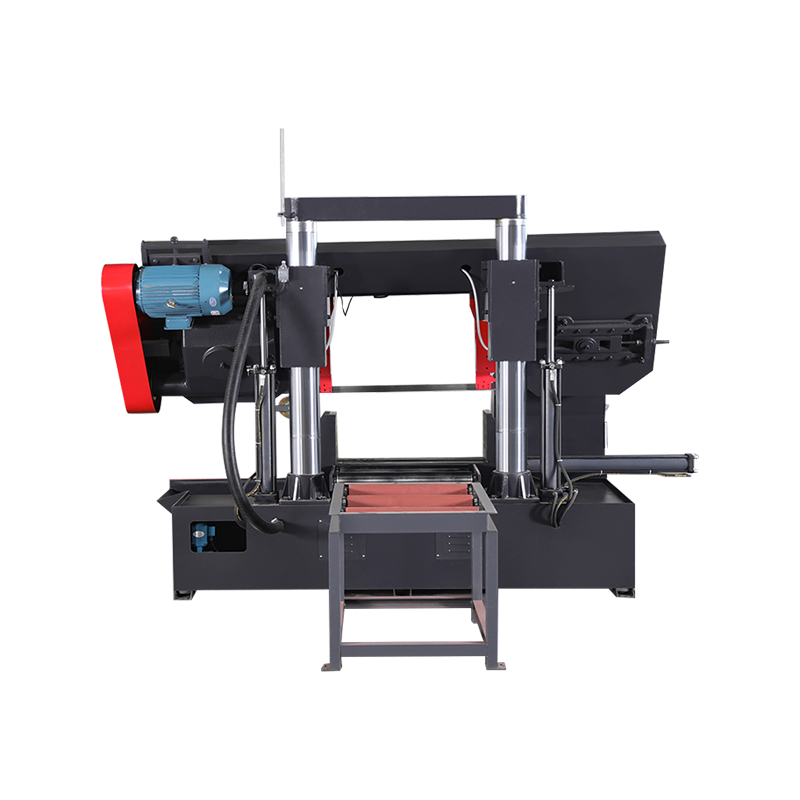
Manufacturers that frequently process alloy steel and other tough metals often face challenges in balancing accuracy with cost efficiency. By adopting a steel pipe cutting machine alongside a vertical metal band sawing machine, businesses can improve cutting precision while reducing unnecessary material loss. The High Precision Industrial Horizontal Die Steel Band Saw Machine is designed to address these challenges, helping industries achieve consistent results in both mold making and general metal processing. Why Material Waste Occurs in Metal Cutting Material waste in cutting operations usually arises from dimensional inaccuracies, uneven edges, and excessive kerf width. Traditional methods such as manual cutting or flame cutting can cause significant losses due to uneven heating or inconsistent operator control. Even small deviations accumulate into higher production costs over time. When cutting alloy steel, the stakes are even higher because of the material’s hardness and cost. A machine that delivers uniform precision helps prevent such waste, ensuring that each section matches the required specifications. Steel Pipe Cutting and Dimensional Accuracy When cutting pipes or tubular sections, maintaining exact lengths and angles is essential. A steel pipe cutting machine allows operators to fix materials securely, avoiding slippage during cutting. This stability ensures each cut matches design requirements without leaving excess scrap. By reducing offcuts, manufacturers increase utilization rates of expensive alloy steel or stainless steel pipes. This is especially important in industries such as construction and automotive manufacturing, where even small deviations can affect assembly precision. Comparing Horizontal and Vertical Machines The choice between horizontal and vertical metal band sawing machines often depends on the type of material being processed. Vertical machines are particularly effective for complex shapes and irregular contours, giving operators flexibility in maneuvering the workpiece. Horizontal machines, on the other hand, excel at straight cuts on solid bars or large volumes of pipe. By integrating both types of equipment, factories can handle diverse cutting tasks while maintaining control over material use. This combination provides a balanced approach to efficiency and precision. Reducing Secondary Processing Needs Traditional cutting methods often leave rough edges that require additional grinding or machining, generating more scrap in the process. With precise band sawing, the finished edge is closer to the required quality standard, reducing the need for secondary operations. This not only saves time but also prevents further material loss during finishing. Optimizing Cutting Parameters Operators can further reduce waste by adjusting cutting speed, feed rate, and blade type according to the material being processed. For example, high-hardness alloys may require slower cutting speeds with coolant systems to prevent overheating and blade wear. By carefully setting these parameters, the High Precision Industrial Horizontal Die Steel Band Saw Machine maintains accuracy while extending blade life. This results in cleaner cuts, fewer errors, and longer intervals between maintenance or blade replacement. Lowering Labor Intensity and Human Error Automated features allow operators to program cutting dimensions and parameters in advance, reducing reliance on manual measurement and adjustment. This decreases the likelihood of mistakes that can cause wasted material. At the same time, it eases the physical workload on staff, making production lines more efficient. The reduction of human error plays a key role in consistent waste management, especially in high-volume production environments. Applications Across Industries Waste reduction is valuable in multiple industries, from mold manufacturing to shipbuilding and aerospace. Each sector requires high-precision parts made from costly materials. Whether working with alloy steel bars, aluminum sections, or copper-based materials, consistent precision ensures fewer offcuts and better resource management. Service and Maintenance Support Effective equipment performance also relies on proper maintenance. Access to after-sales services such as installation support, operator training, and scheduled inspections helps ensure that the machine continues operating at a high level of accuracy. Regular servicing prevents issues like blade misalignment or excessive vibration, both of which can contribute to material waste. With technical support readily available, operators can keep the equipment in stable condition, further minimizing avoidable losses.
Manufacturers that frequently process alloy steel and other tough metals often face challenges in balancing accuracy with cost efficiency. By adopting a steel pipe cutting machine alongside a vertical metal band sawing machine, businesses can improve cutting precision while reducing unnecessary material loss. The High Precision Industrial Horizontal Die Steel Band Saw Machine is designed to address these challenges, helping industries achieve consistent results in both mold making and general metal processing. Why Material Waste Occurs in Metal Cutting Material waste in cutting operations usually arises from dimensional inaccuracies, uneven edges, and excessive kerf width. Traditional methods such as manual cutting or flame cutting can cause significant losses due to uneven heating or inconsistent operator control. Even small deviations accumulate into higher production costs over time. When cutting alloy steel, the stakes are even higher because of the material’s hardness and cost. A machine that delivers uniform precision helps prevent such waste, ensuring that each section matches the required specifications. Steel Pipe Cutting and Dimensional Accuracy When cutting pipes or tubular sections, maintaining exact lengths and angles is essential. A steel pipe cutting machine allows operators to fix materials securely, avoiding slippage during cutting. This stability ensures each cut matches design requirements without leaving excess scrap. By reducing offcuts, manufacturers increase utilization rates of expensive alloy steel or stainless steel pipes. This is especially important in industries such as construction and automotive manufacturing, where even small deviations can affect assembly precision. Comparing Horizontal and Vertical Machines The choice between horizontal and vertical metal band sawing machines often depends on the type of material being processed. Vertical machines are particularly effective for complex shapes and irregular contours, giving operators flexibility in maneuvering the workpiece. Horizontal machines, on the other hand, excel at straight cuts on solid bars or large volumes of pipe. By integrating both types of equipment, factories can handle diverse cutting tasks while maintaining control over material use. This combination provides a balanced approach to efficiency and precision. Reducing Secondary Processing Needs Traditional cutting methods often leave rough edges that require additional grinding or machining, generating more scrap in the process. With precise band sawing, the finished edge is closer to the required quality standard, reducing the need for secondary operations. This not only saves time but also prevents further material loss during finishing. Optimizing Cutting Parameters Operators can further reduce waste by adjusting cutting speed, feed rate, and blade type according to the material being processed. For example, high-hardness alloys may require slower cutting speeds with coolant systems to prevent overheating and blade wear. By carefully setting these parameters, the High Precision Industrial Horizontal Die Steel Band Saw Machine maintains accuracy while extending blade life. This results in cleaner cuts, fewer errors, and longer intervals between maintenance or blade replacement. Lowering Labor Intensity and Human Error Automated features allow operators to program cutting dimensions and parameters in advance, reducing reliance on manual measurement and adjustment. This decreases the likelihood of mistakes that can cause wasted material. At the same time, it eases the physical workload on staff, making production lines more efficient. The reduction of human error plays a key role in consistent waste management, especially in high-volume production environments. Applications Across Industries Waste reduction is valuable in multiple industries, from mold manufacturing to shipbuilding and aerospace. Each sector requires high-precision parts made from costly materials. Whether working with alloy steel bars, aluminum sections, or copper-based materials, consistent precision ensures fewer offcuts and better resource management. Service and Maintenance Support Effective equipment performance also relies on proper maintenance. Access to after-sales services such as installation support, operator training, and scheduled inspections helps ensure that the machine continues operating at a high level of accuracy. Regular servicing prevents issues like blade misalignment or excessive vibration, both of which can contribute to material waste. With technical support readily available, operators can keep the equipment in stable condition, further minimizing avoidable losses.
 READ MORE
READ MORE

When working with heavy-duty metals such as alloy steel, achieving clean and accurate cuts can be a challenge. Using a steel pipe cutting machine in combination with a vertical metal band sawing machine offers a practical solution for manufacturers that demand precision in both mold production and metal processing. Among the advanced options available today, the High Precision Industrial Horizontal Die Steel Band Saw Machine has gained attention for its ability to handle diverse cutting needs while maintaining accuracy and efficiency. The Role of Precision in Alloy Steel Cutting Alloy steel is widely used in industries such as automotive, aerospace, and construction due to its strength and durability. However, its hardness makes it difficult to cut with traditional flame cutting or manual techniques, which often result in uneven surfaces and wasted material. A dedicated band sawing machine provides precise control over the cutting process, ensuring consistent dimensions and smooth finishes. Advantages of Using a Horizontal Die Steel Band Saw The High Precision Industrial Horizontal Die Steel Band Saw Machine stands out for its advanced cutting performance. Equipped with a powerful motor and a strong cutting blade, it can efficiently process tough materials like alloy steel, aluminum alloys, and copper alloys. For manufacturers who frequently work with pipe sections or solid steel bars, the machine’s stability ensures consistent results over long production runs. The smoothness of the finished surface also reduces the need for secondary processing, saving both time and cost in downstream operations. Comparing Steel Pipe Cutting and Vertical Band Sawing Although a steel pipe cutting machine and a vertical metal band sawing machine may appear to serve similar purposes, their applications often differ. A steel pipe cutting machine is particularly useful when working with cylindrical or hollow sections, delivering accurate pipe lengths for construction or industrial assembly. On the other hand, a vertical metal band sawing machine is advantageous for handling irregularly shaped materials or complex molds, as the vertical setup allows more flexibility in guiding the material. Combining the strengths of both approaches allows manufacturers to expand their range of capabilities without sacrificing precision. Reducing Labor Intensity with Automated Controls Cutting tasks that once required intensive manual effort are now simplified through automated control systems. Operators can set parameters in advance, such as cutting speed and dimensions, allowing the machine to perform the process with minimal supervision. This reduces the need for constant adjustments and decreases physical strain on workers. As a result, production efficiency improves, and employees can focus on higher-value tasks such as quality monitoring and equipment maintenance. Application in High-Hardness Material Processing Cutting high-hardness materials, such as high-temperature alloys, is often a significant challenge in manufacturing. The horizontal die steel band saw is designed to address this issue with its reinforced cutting components and high-power motor. By providing stable cutting force, it delivers consistent performance even when working with demanding materials. This capability makes it especially useful in industries that require durable molds and precise components, ensuring that production schedules remain on track without sacrificing quality. Enhancing Productivity Through Reduced Material Waste One of the common problems in metal processing is the loss of valuable material due to inaccurate cutting. The machine’s ability to maintain high dimensional accuracy helps avoid unnecessary waste. For businesses, this translates into better material utilization and reduced production costs. More efficient use of raw materials also aligns with sustainability goals, an increasingly important factor in industrial operations. Practical Use in Different Industries Manufacturers in mold making, shipbuilding, bridge construction, and machinery production all benefit from precision sawing equipment. By combining the functionality of a steel pipe cutting machine with the versatility of a vertical metal band sawing machine, businesses can expand their range of operations. From cutting structural pipes for construction projects to processing alloy steel components for high-end molds, the machine provides the accuracy required for diverse industrial applications.
When working with heavy-duty metals such as alloy steel, achieving clean and accurate cuts can be a challenge. Using a steel pipe cutting machine in combination with a vertical metal band sawing machine offers a practical solution for manufacturers that demand precision in both mold production and metal processing. Among the advanced options available today, the High Precision Industrial Horizontal Die Steel Band Saw Machine has gained attention for its ability to handle diverse cutting needs while maintaining accuracy and efficiency. The Role of Precision in Alloy Steel Cutting Alloy steel is widely used in industries such as automotive, aerospace, and construction due to its strength and durability. However, its hardness makes it difficult to cut with traditional flame cutting or manual techniques, which often result in uneven surfaces and wasted material. A dedicated band sawing machine provides precise control over the cutting process, ensuring consistent dimensions and smooth finishes. Advantages of Using a Horizontal Die Steel Band Saw The High Precision Industrial Horizontal Die Steel Band Saw Machine stands out for its advanced cutting performance. Equipped with a powerful motor and a strong cutting blade, it can efficiently process tough materials like alloy steel, aluminum alloys, and copper alloys. For manufacturers who frequently work with pipe sections or solid steel bars, the machine’s stability ensures consistent results over long production runs. The smoothness of the finished surface also reduces the need for secondary processing, saving both time and cost in downstream operations. Comparing Steel Pipe Cutting and Vertical Band Sawing Although a steel pipe cutting machine and a vertical metal band sawing machine may appear to serve similar purposes, their applications often differ. A steel pipe cutting machine is particularly useful when working with cylindrical or hollow sections, delivering accurate pipe lengths for construction or industrial assembly. On the other hand, a vertical metal band sawing machine is advantageous for handling irregularly shaped materials or complex molds, as the vertical setup allows more flexibility in guiding the material. Combining the strengths of both approaches allows manufacturers to expand their range of capabilities without sacrificing precision. Reducing Labor Intensity with Automated Controls Cutting tasks that once required intensive manual effort are now simplified through automated control systems. Operators can set parameters in advance, such as cutting speed and dimensions, allowing the machine to perform the process with minimal supervision. This reduces the need for constant adjustments and decreases physical strain on workers. As a result, production efficiency improves, and employees can focus on higher-value tasks such as quality monitoring and equipment maintenance. Application in High-Hardness Material Processing Cutting high-hardness materials, such as high-temperature alloys, is often a significant challenge in manufacturing. The horizontal die steel band saw is designed to address this issue with its reinforced cutting components and high-power motor. By providing stable cutting force, it delivers consistent performance even when working with demanding materials. This capability makes it especially useful in industries that require durable molds and precise components, ensuring that production schedules remain on track without sacrificing quality. Enhancing Productivity Through Reduced Material Waste One of the common problems in metal processing is the loss of valuable material due to inaccurate cutting. The machine’s ability to maintain high dimensional accuracy helps avoid unnecessary waste. For businesses, this translates into better material utilization and reduced production costs. More efficient use of raw materials also aligns with sustainability goals, an increasingly important factor in industrial operations. Practical Use in Different Industries Manufacturers in mold making, shipbuilding, bridge construction, and machinery production all benefit from precision sawing equipment. By combining the functionality of a steel pipe cutting machine with the versatility of a vertical metal band sawing machine, businesses can expand their range of operations. From cutting structural pipes for construction projects to processing alloy steel components for high-end molds, the machine provides the accuracy required for diverse industrial applications.
 READ MORE
READ MORE